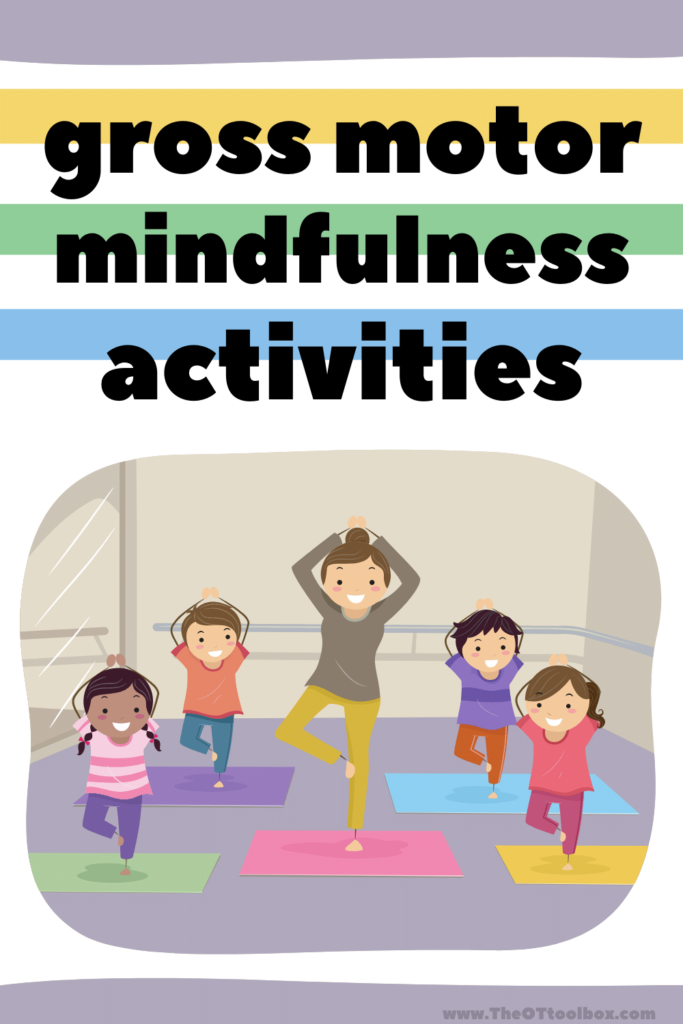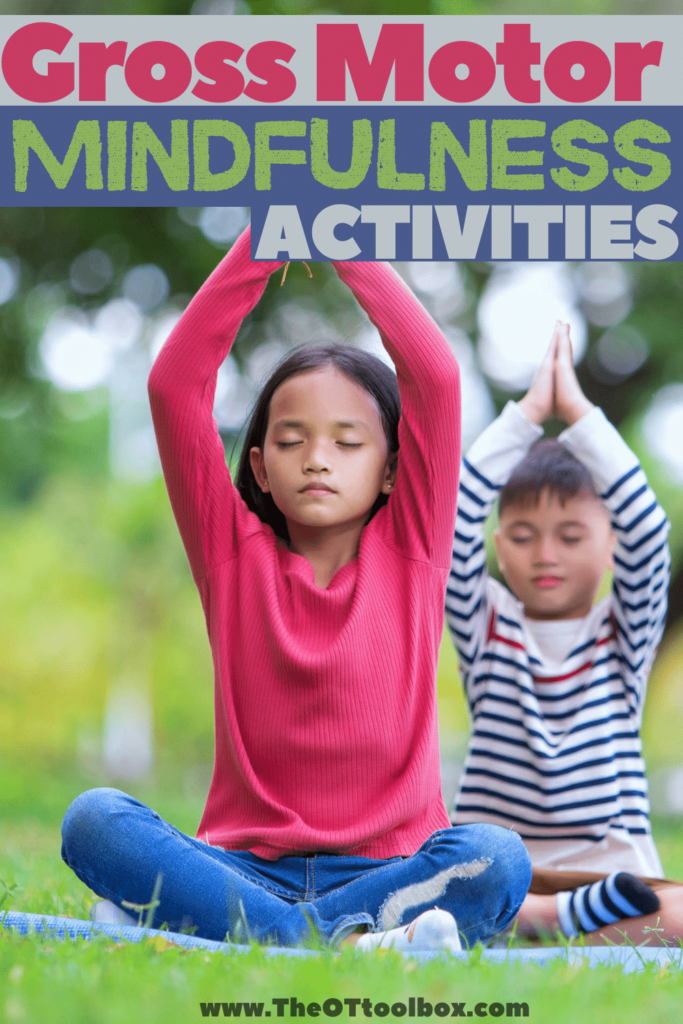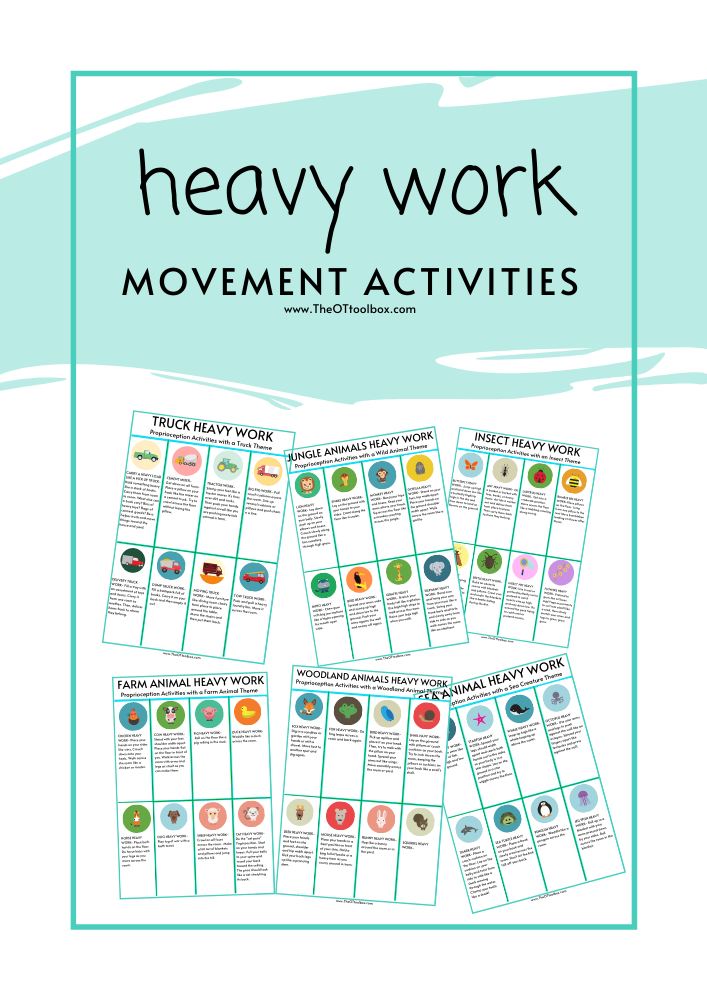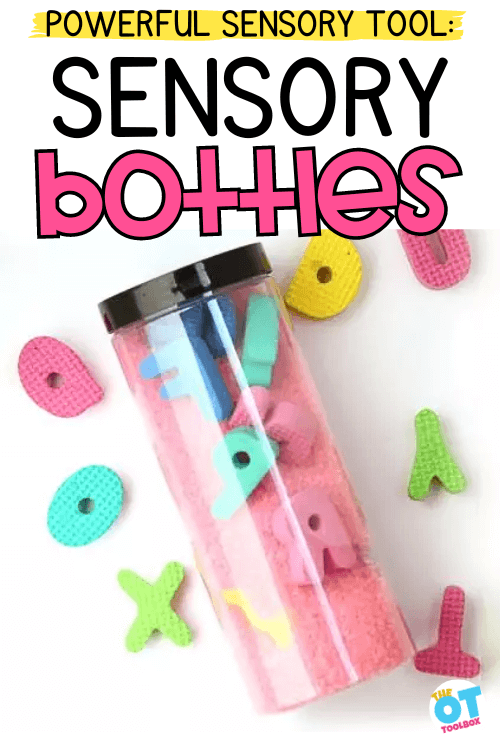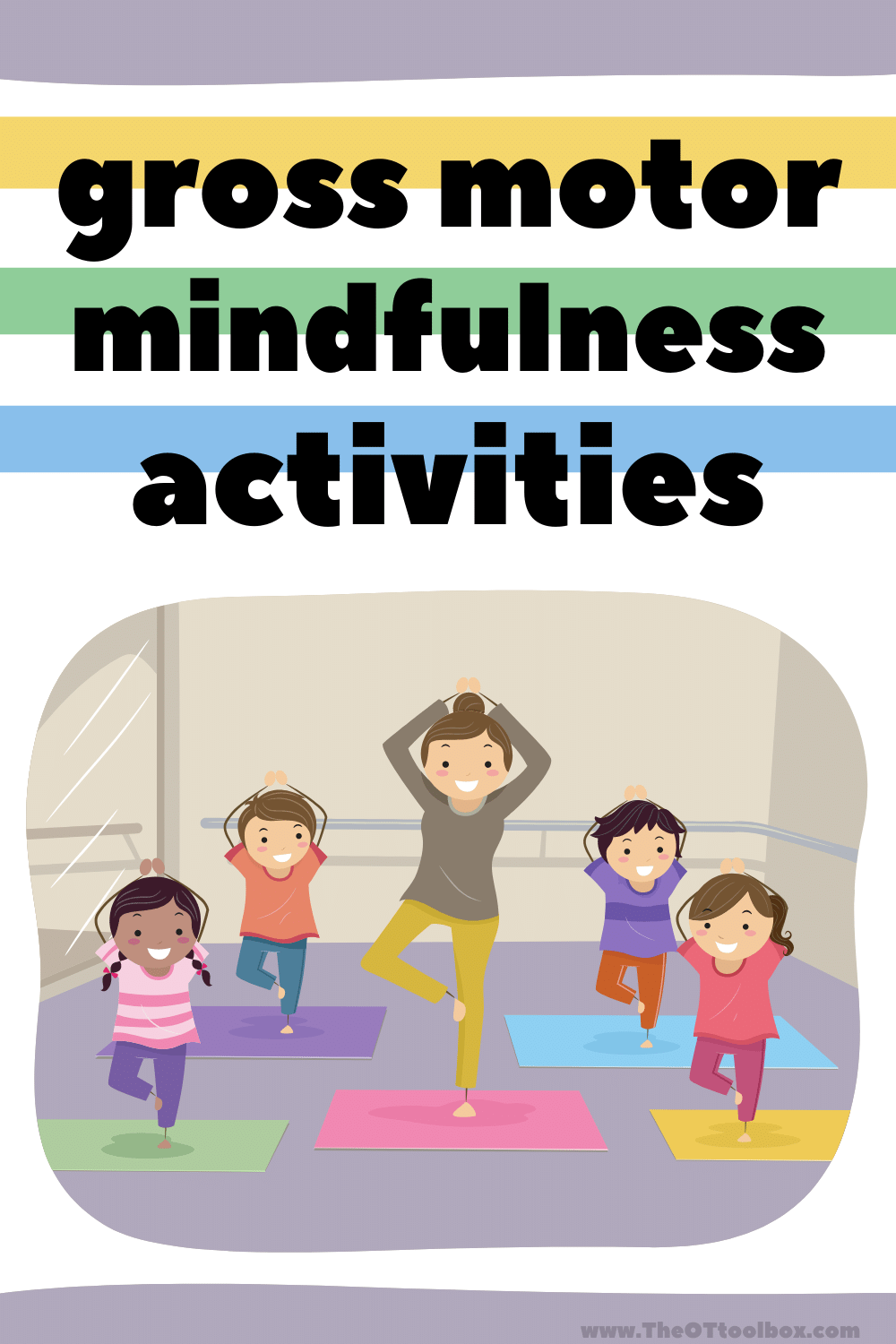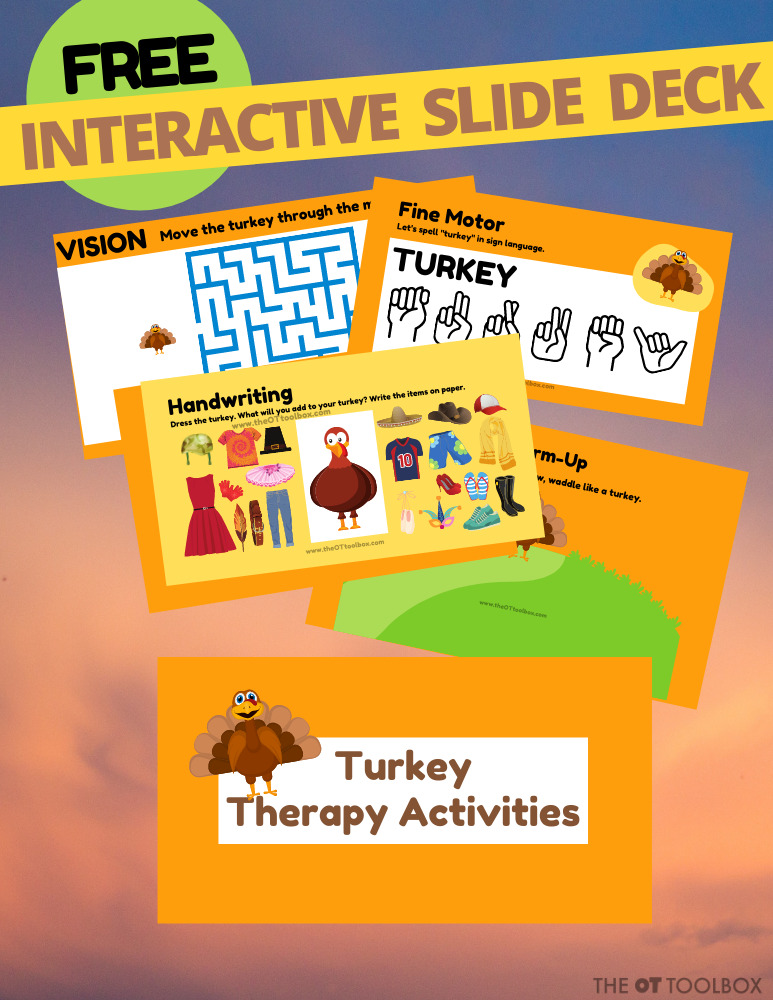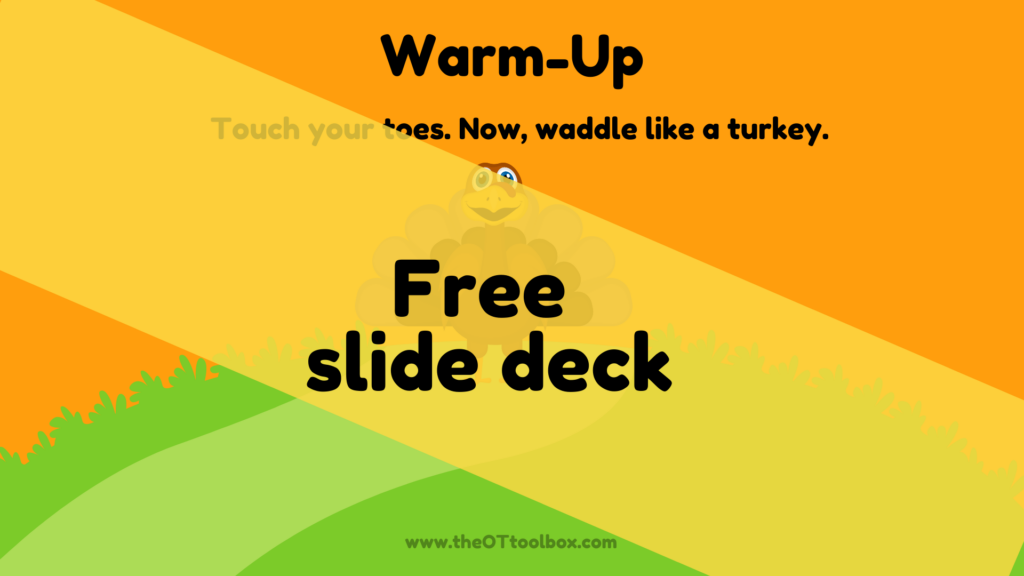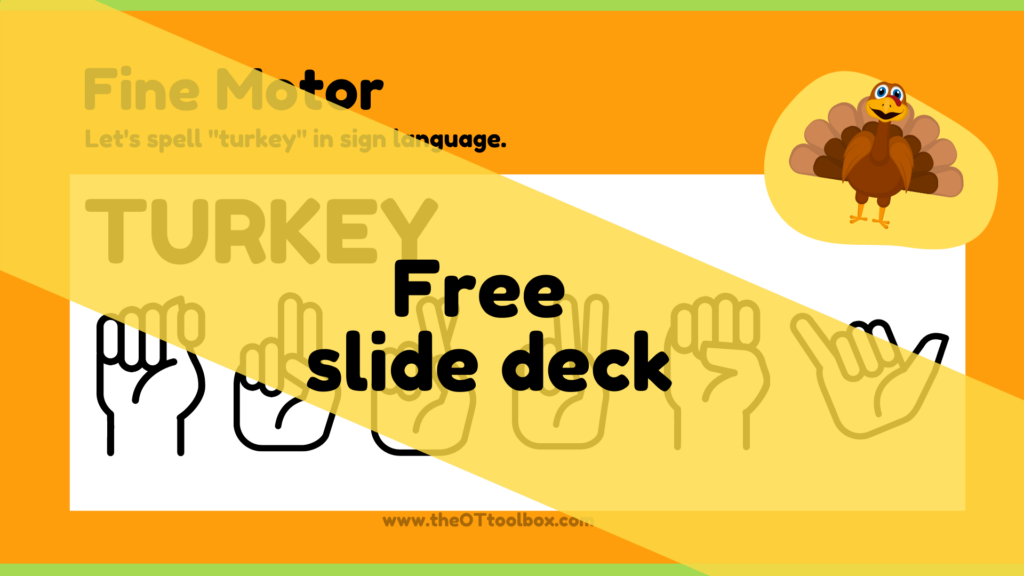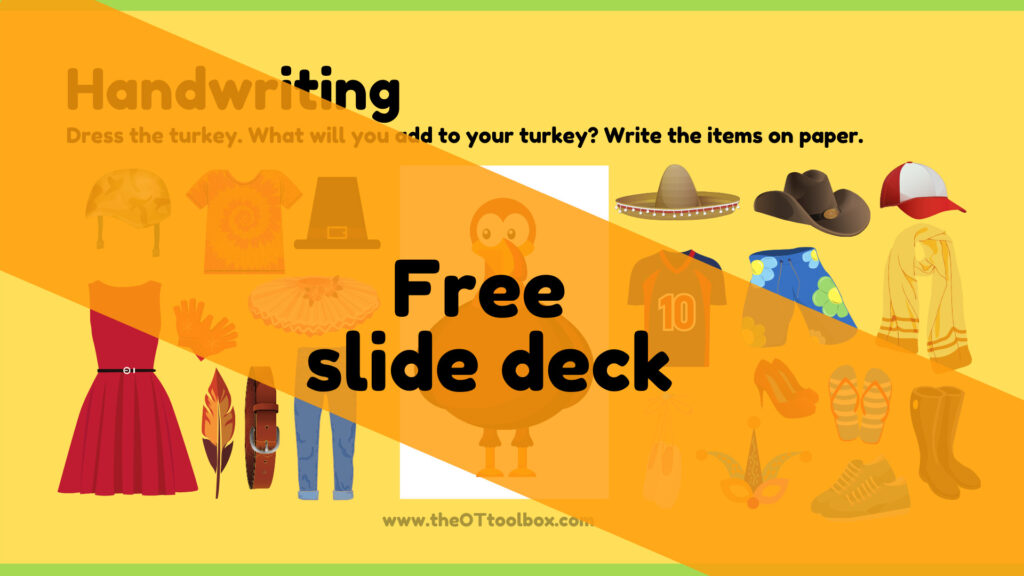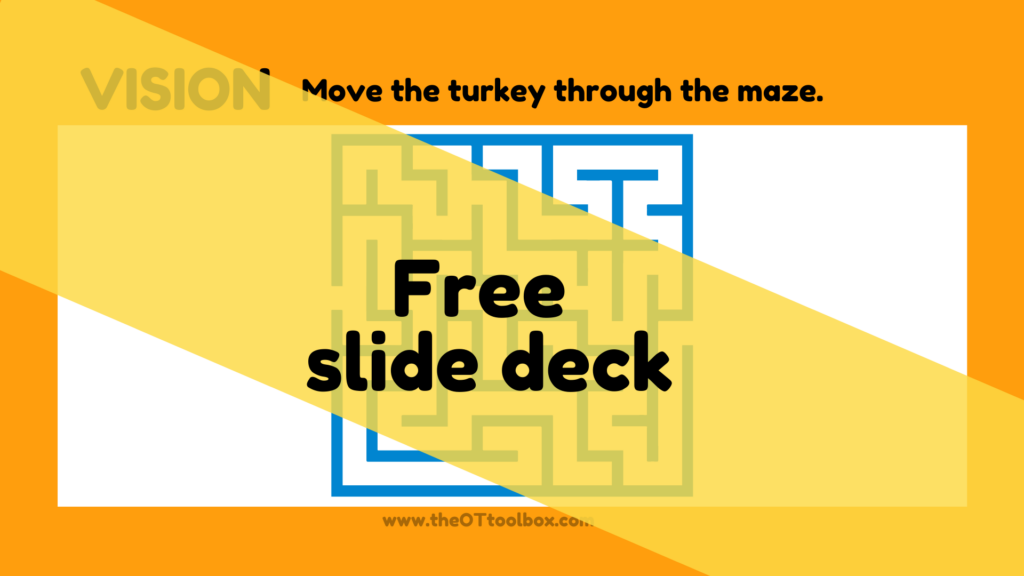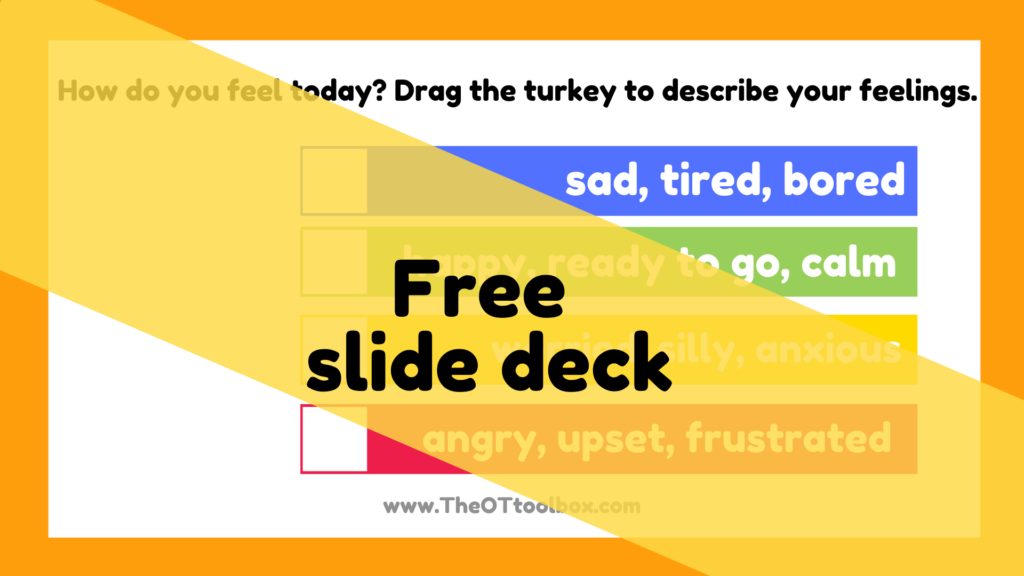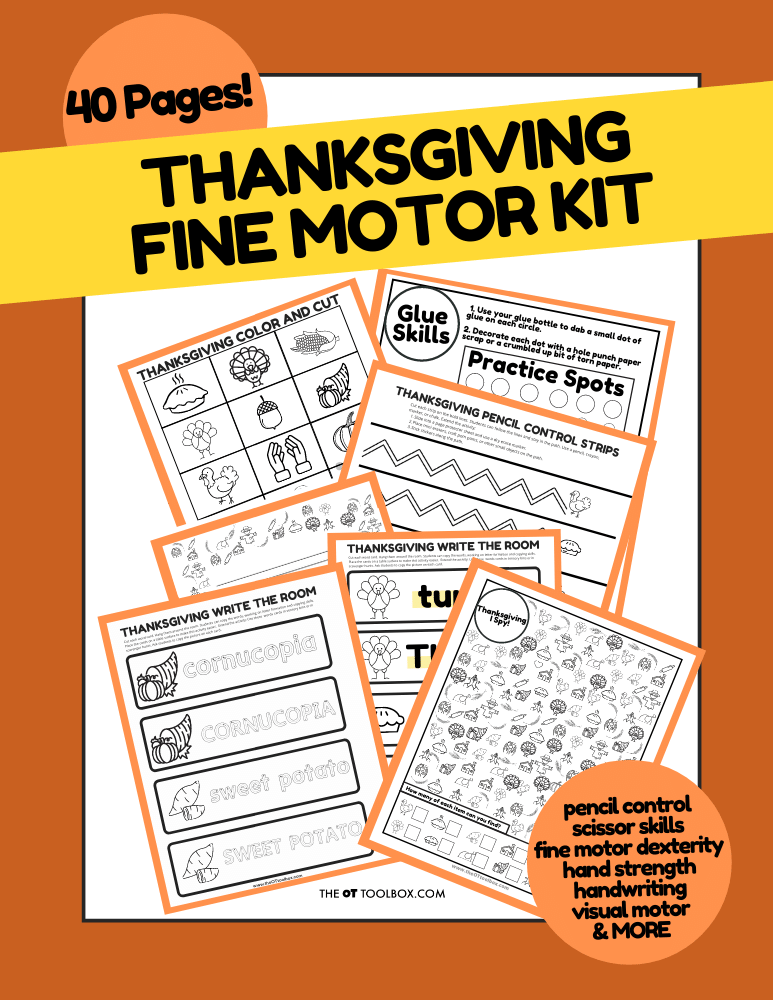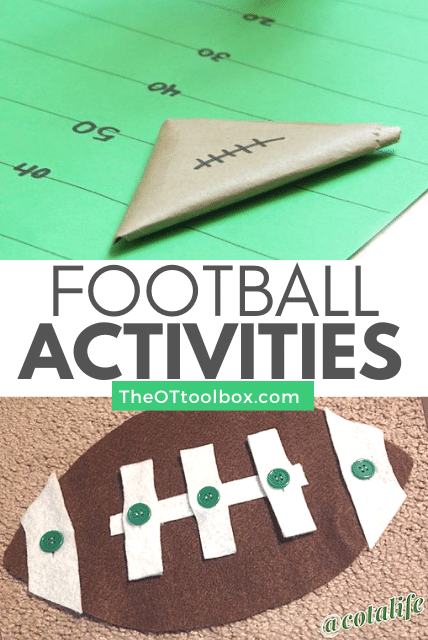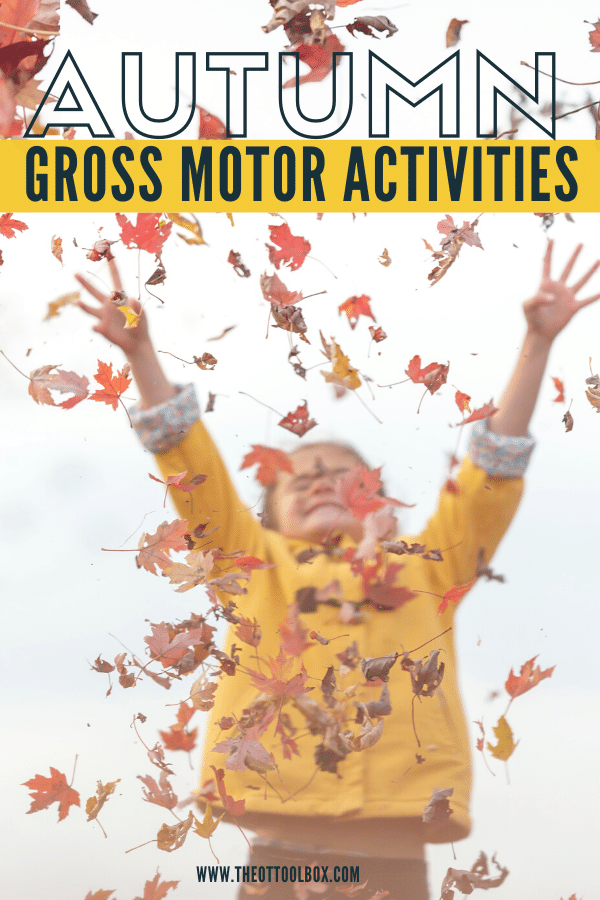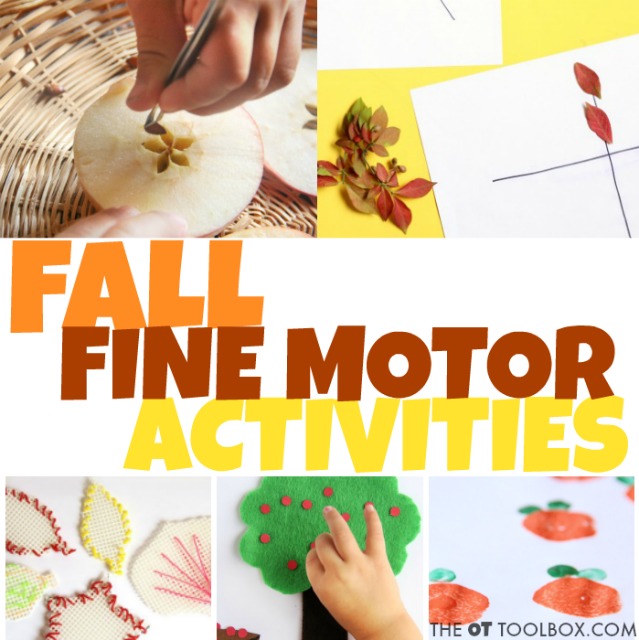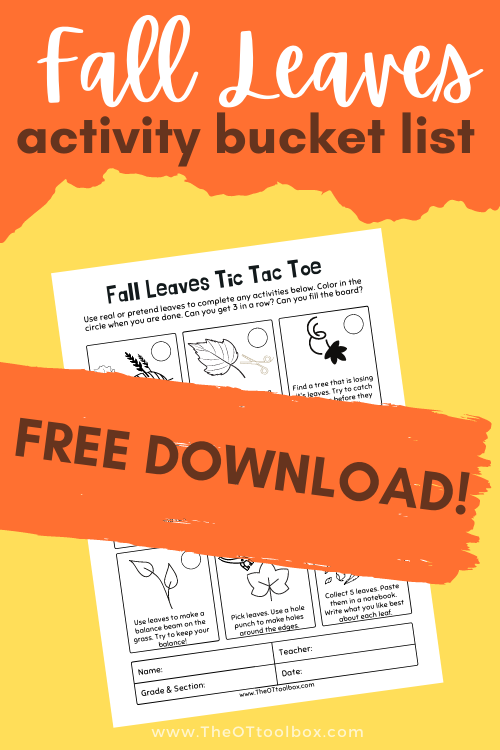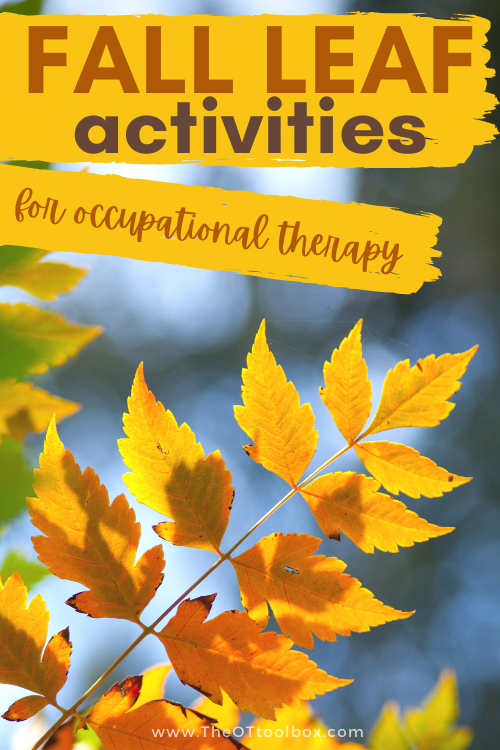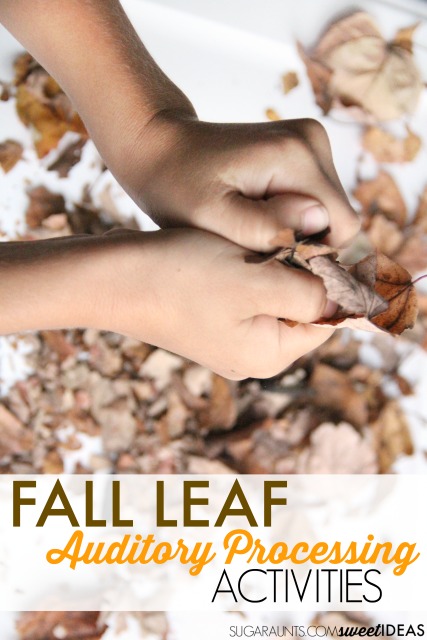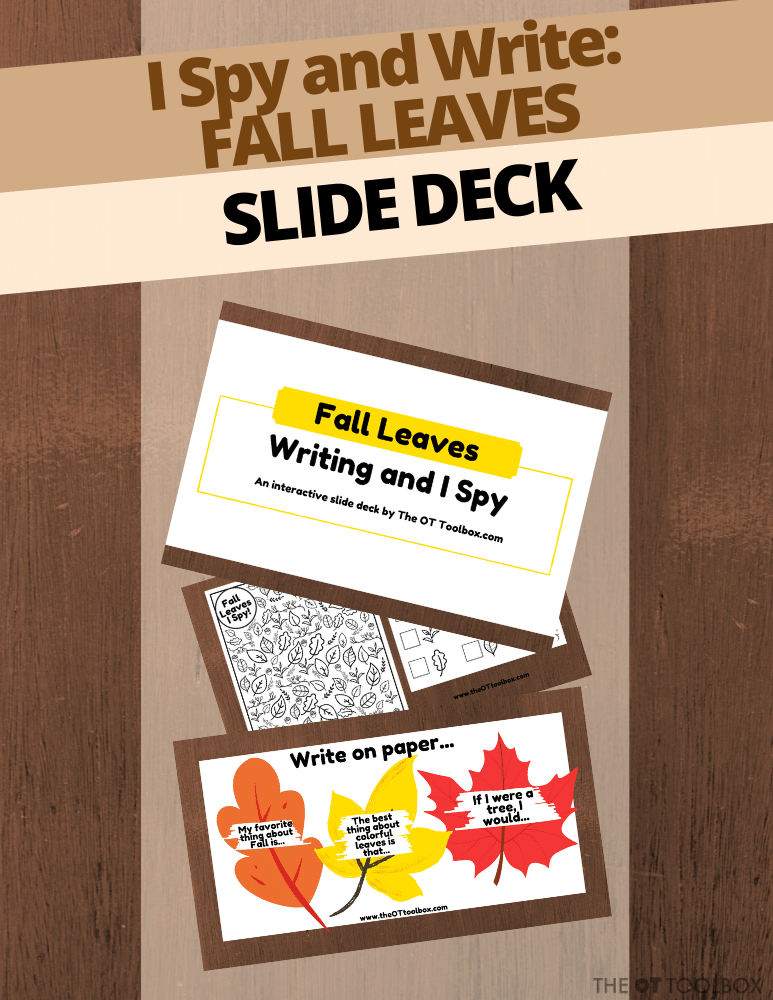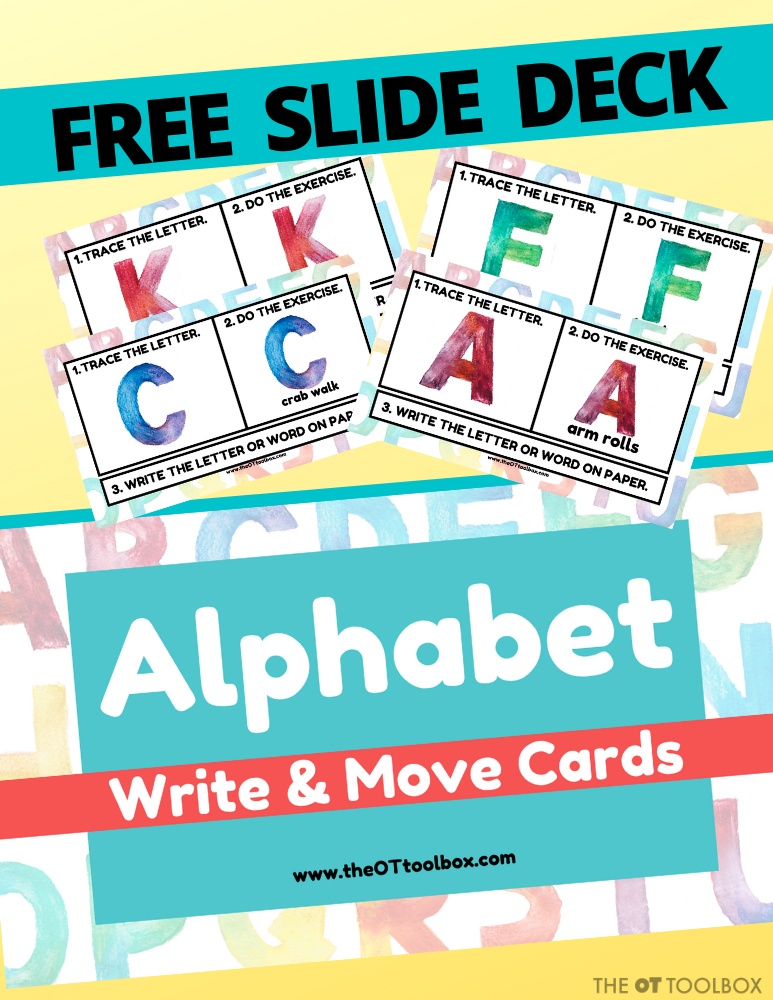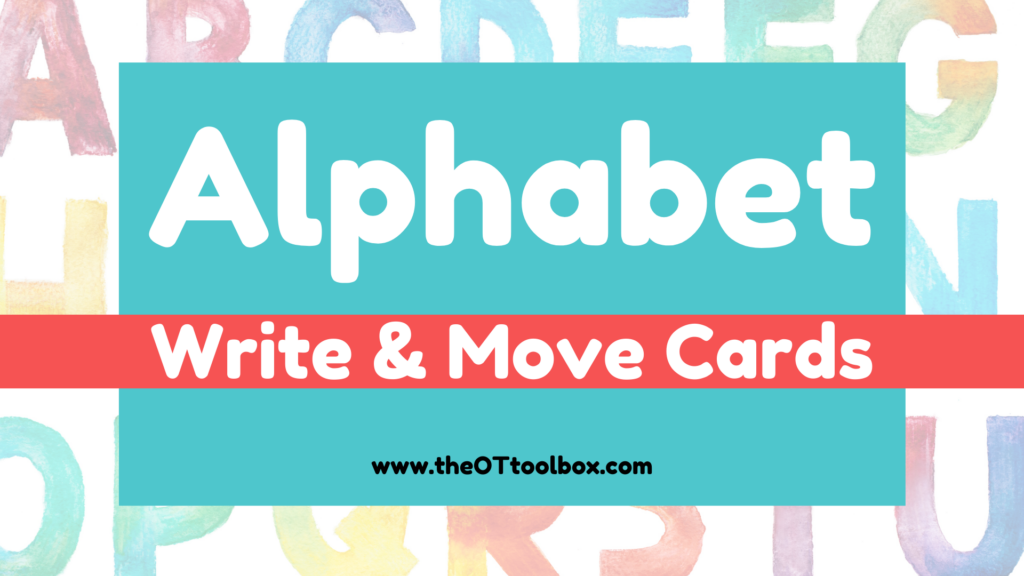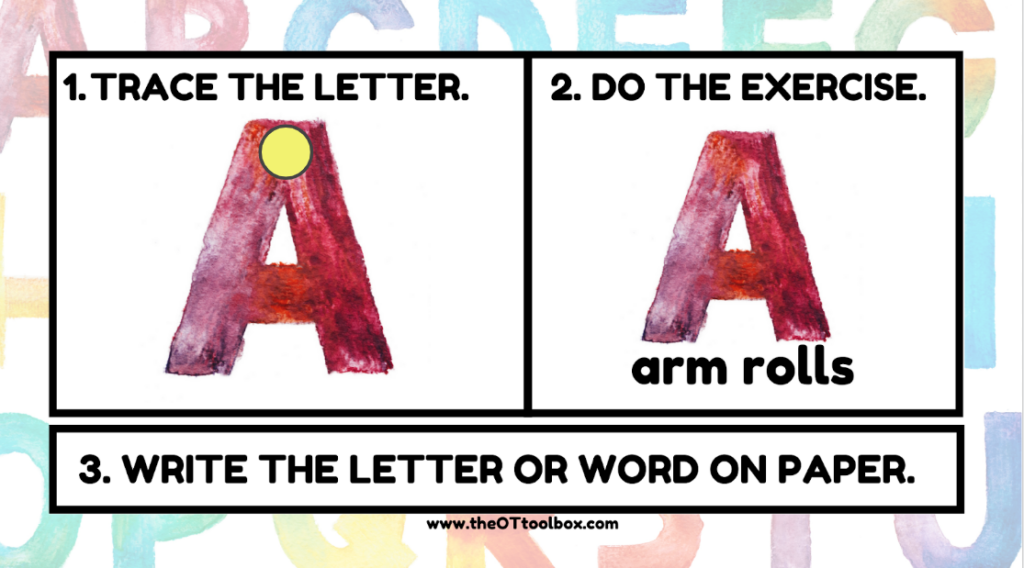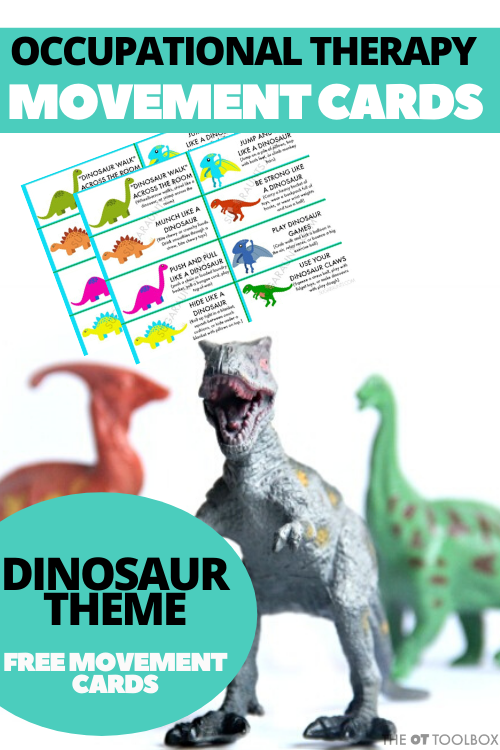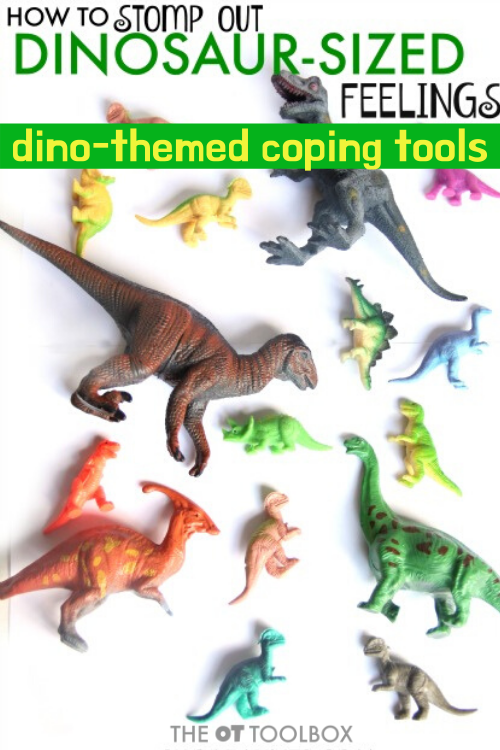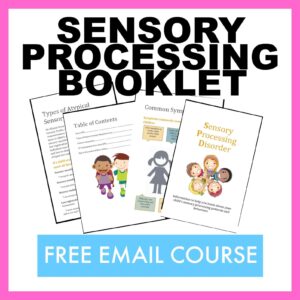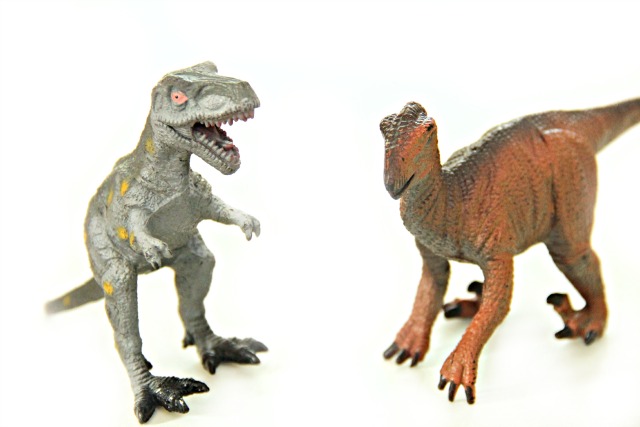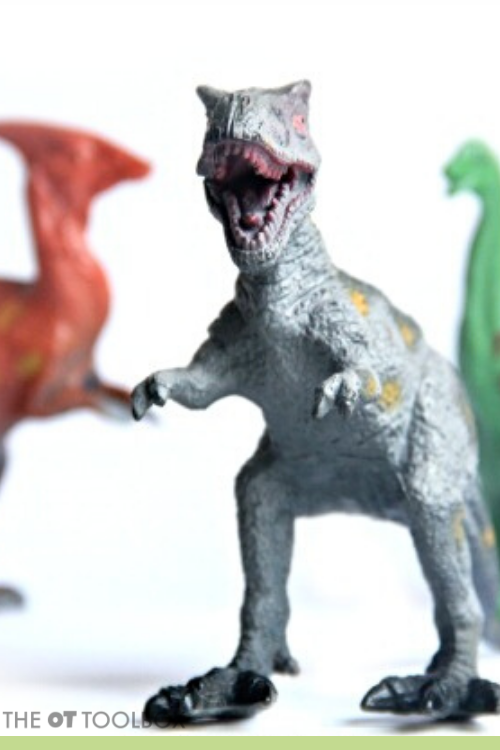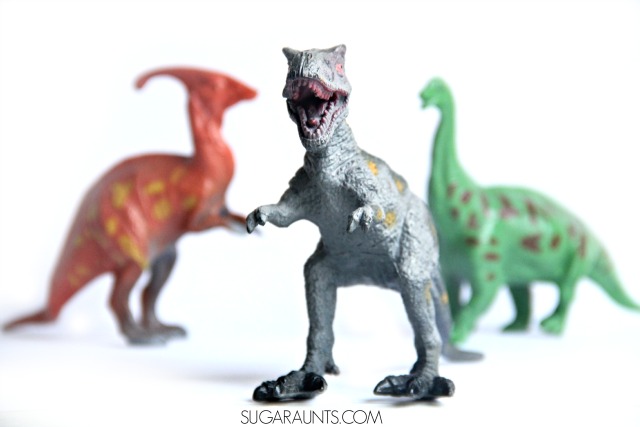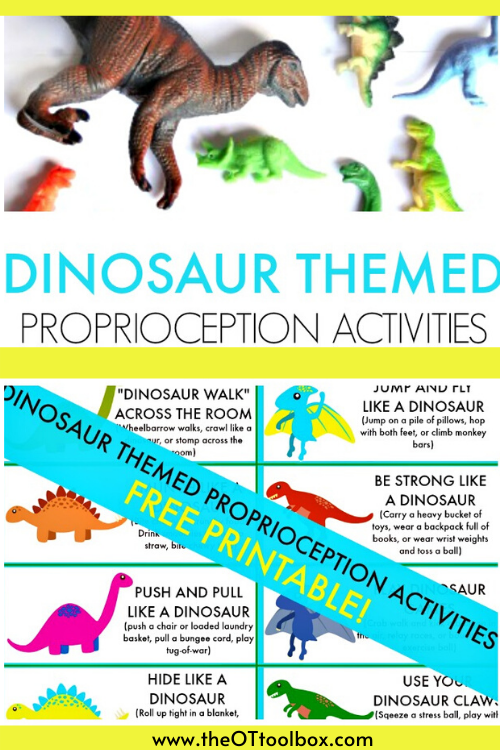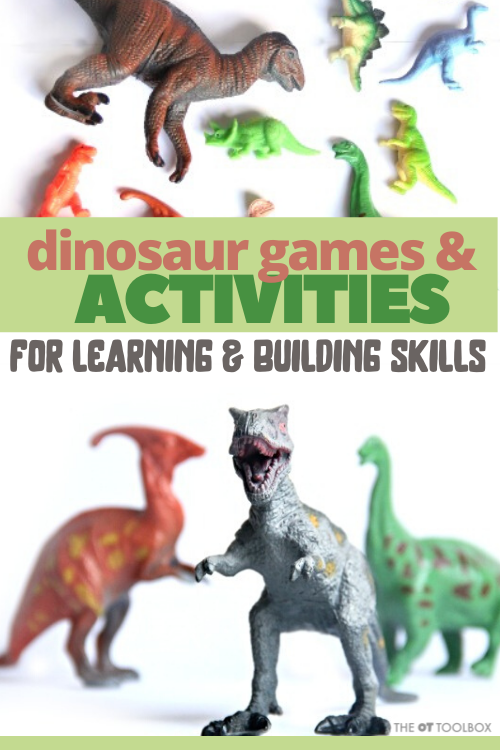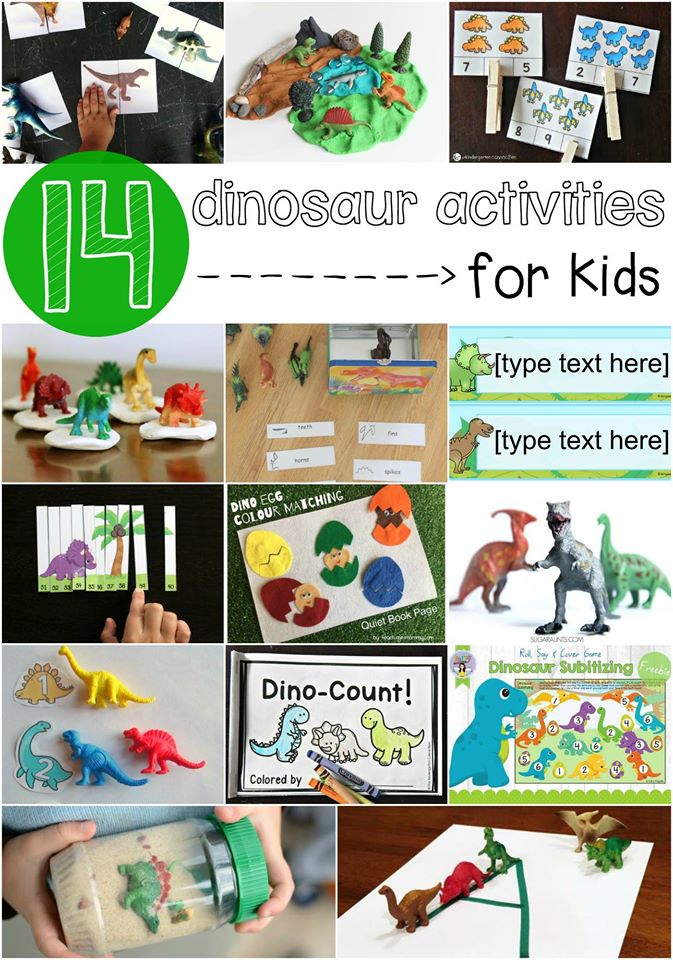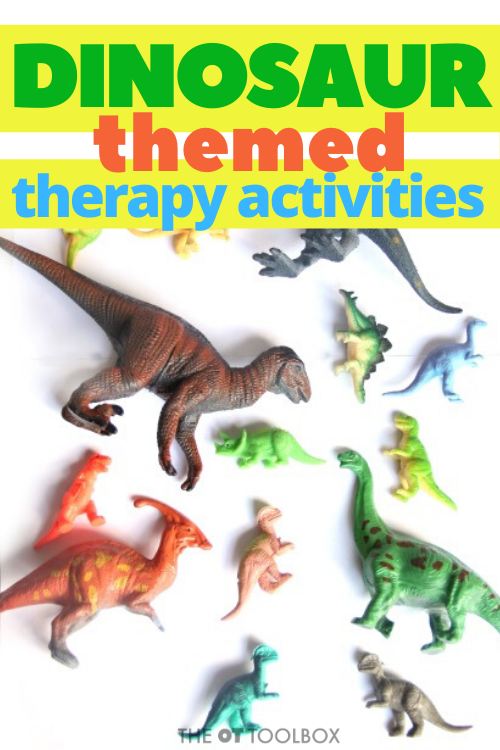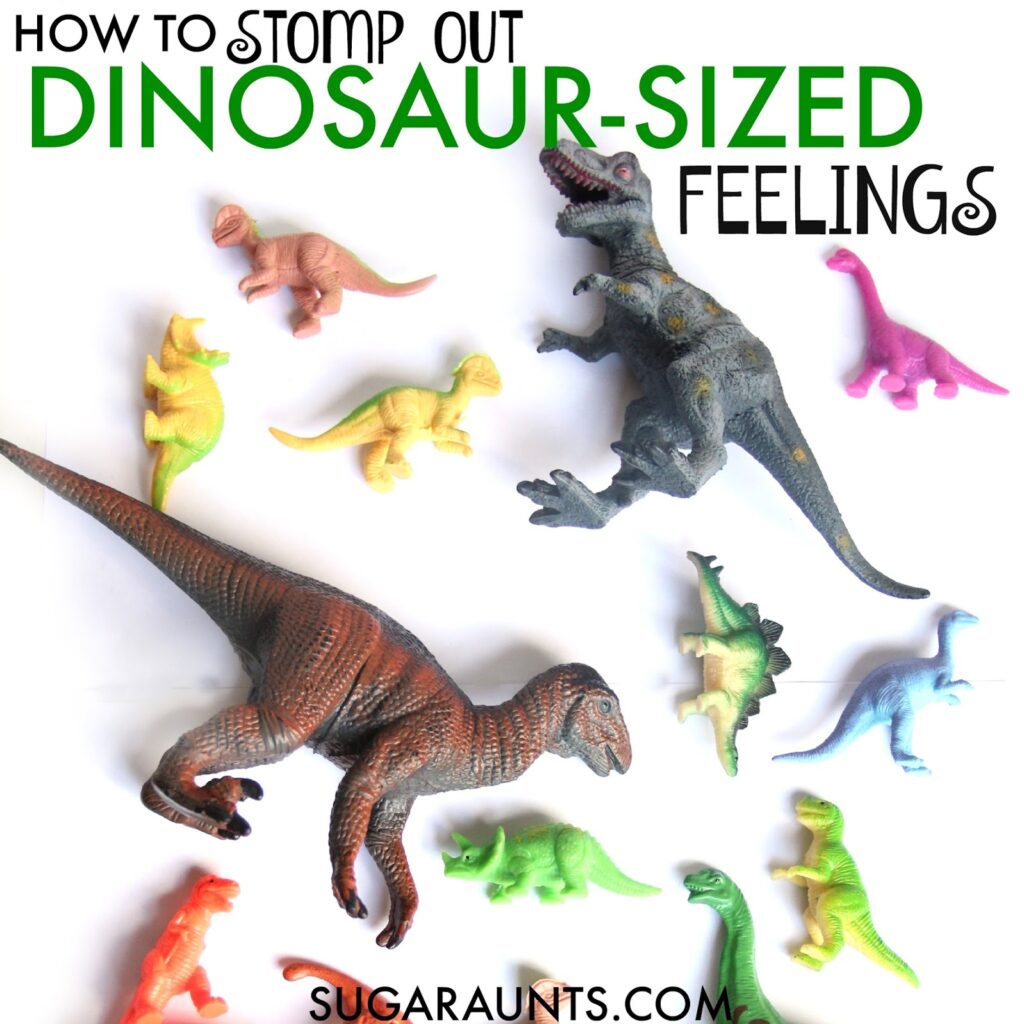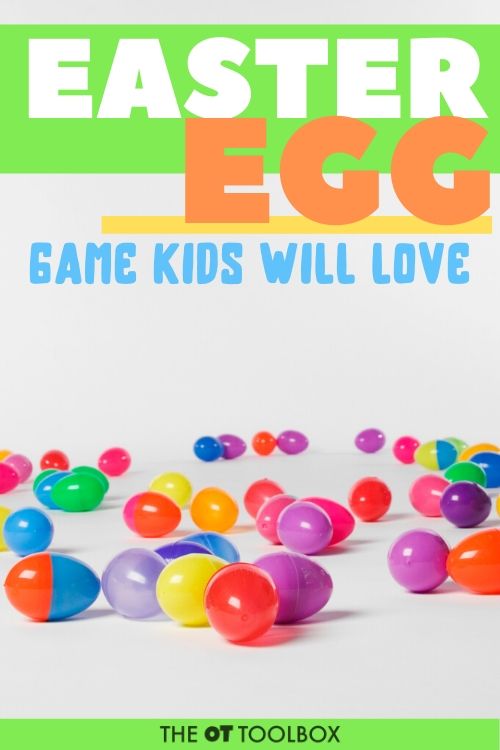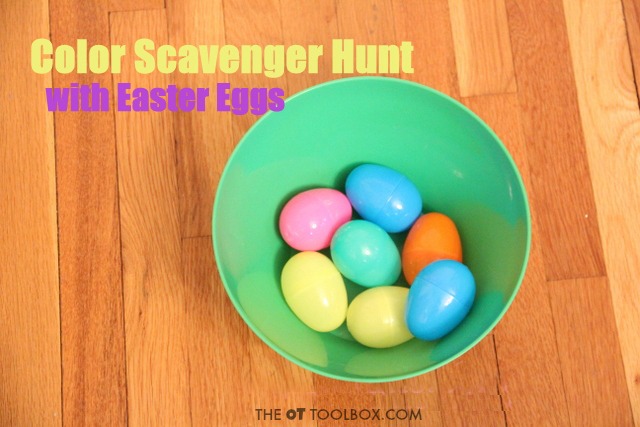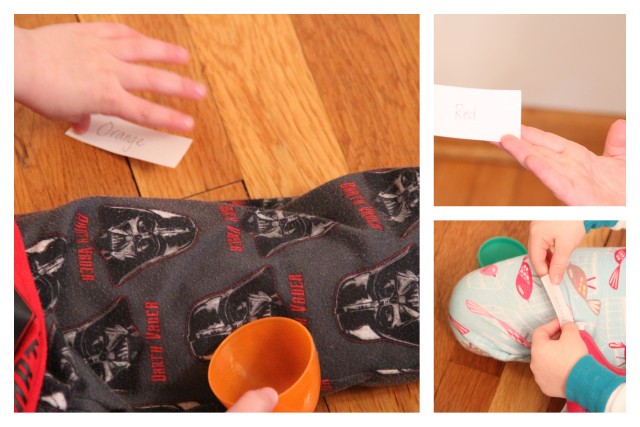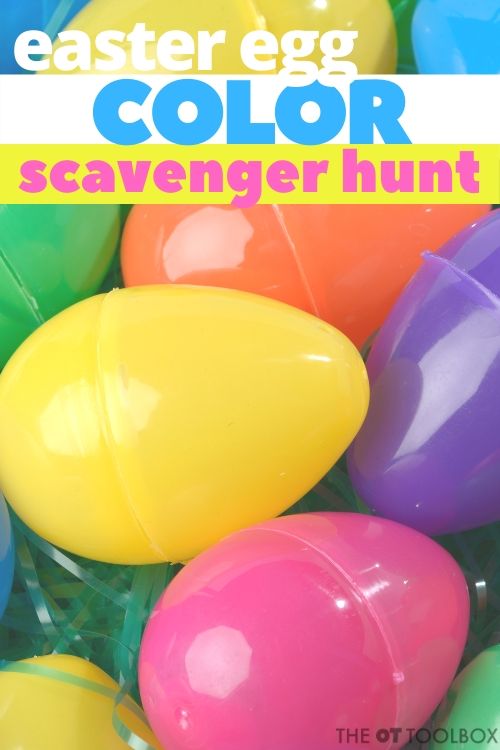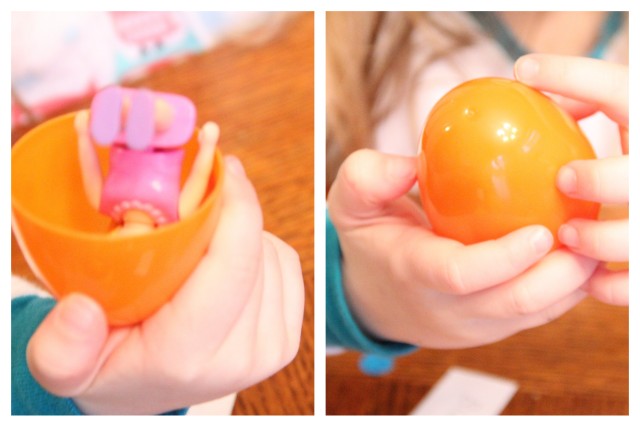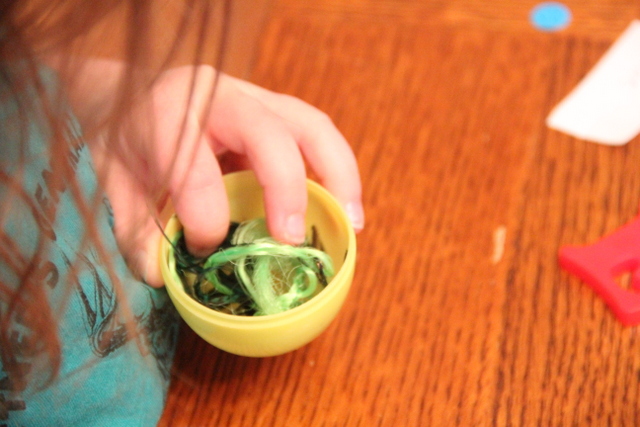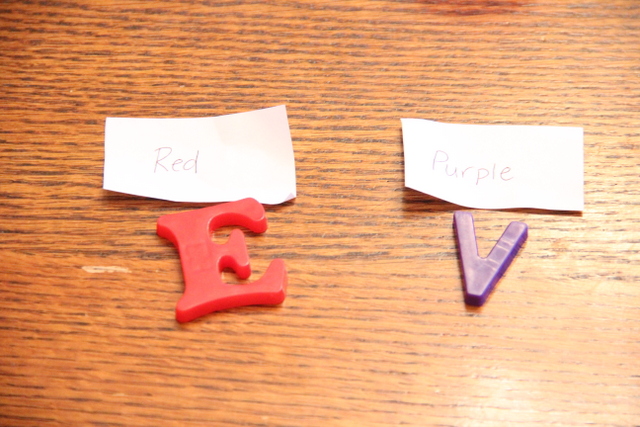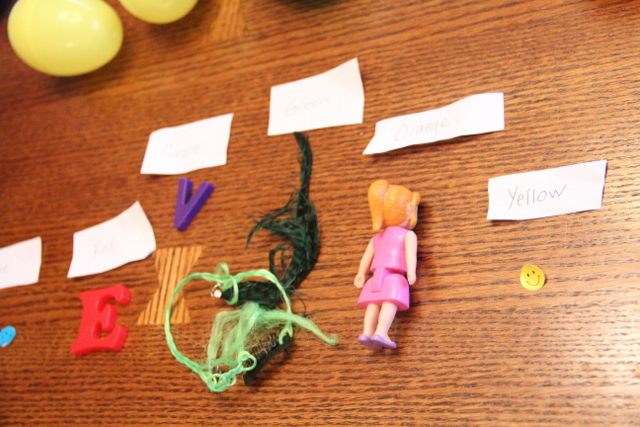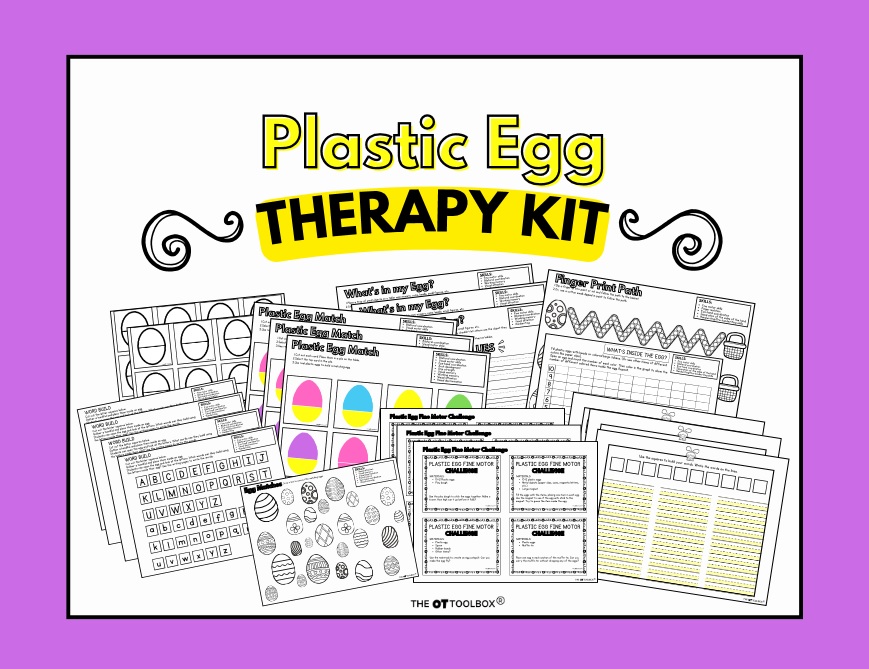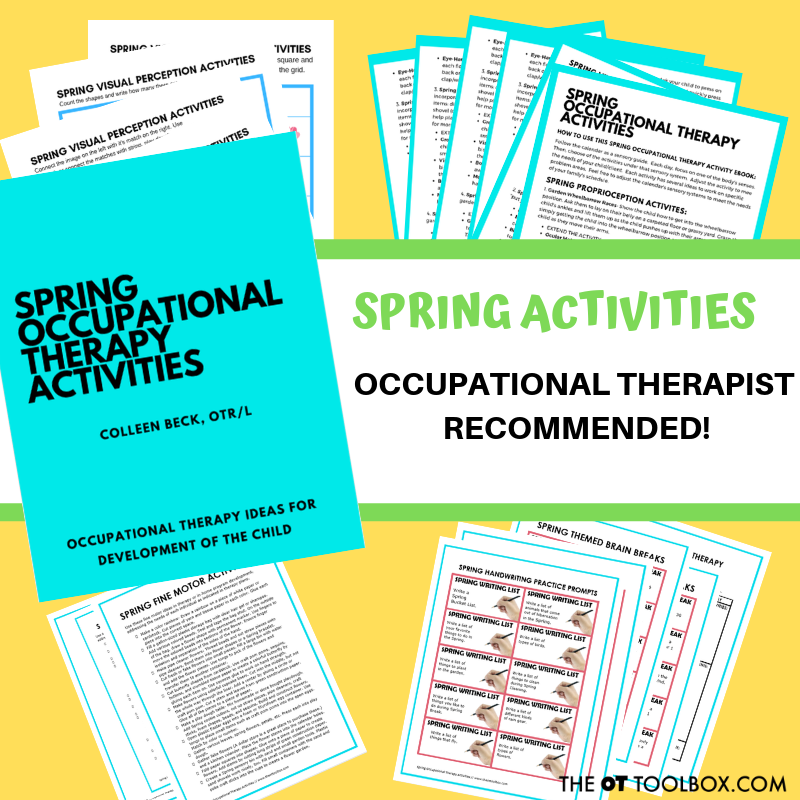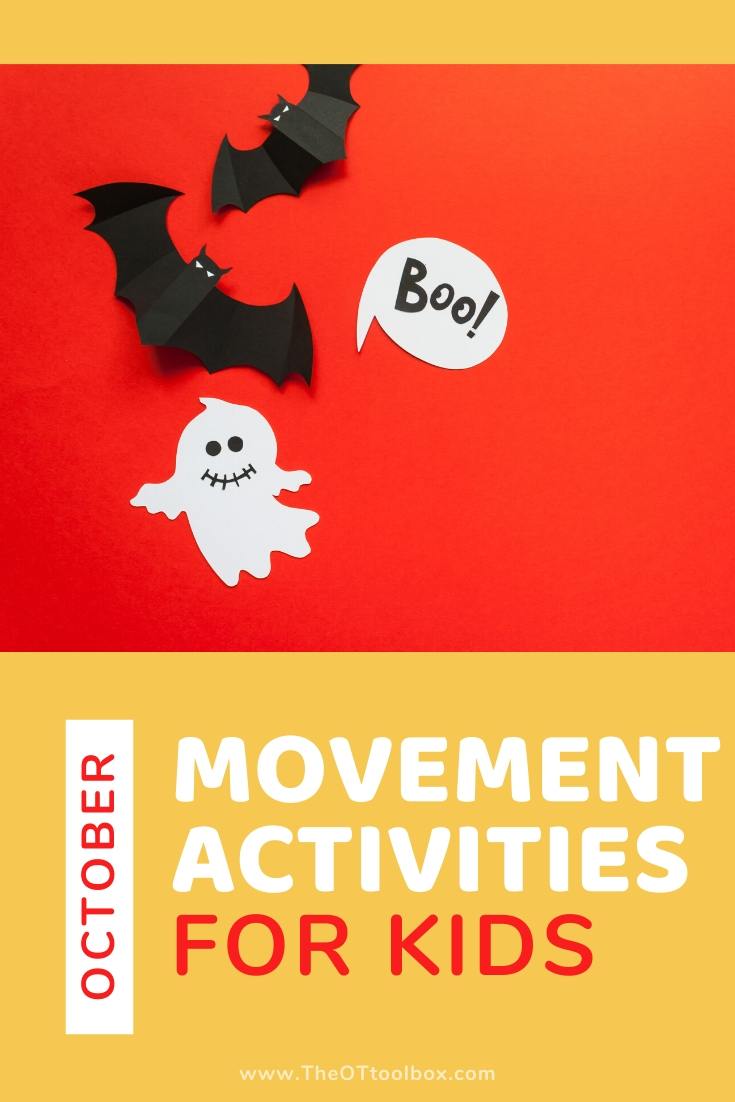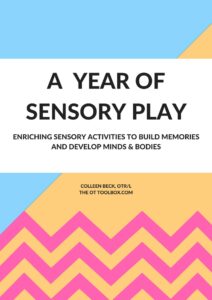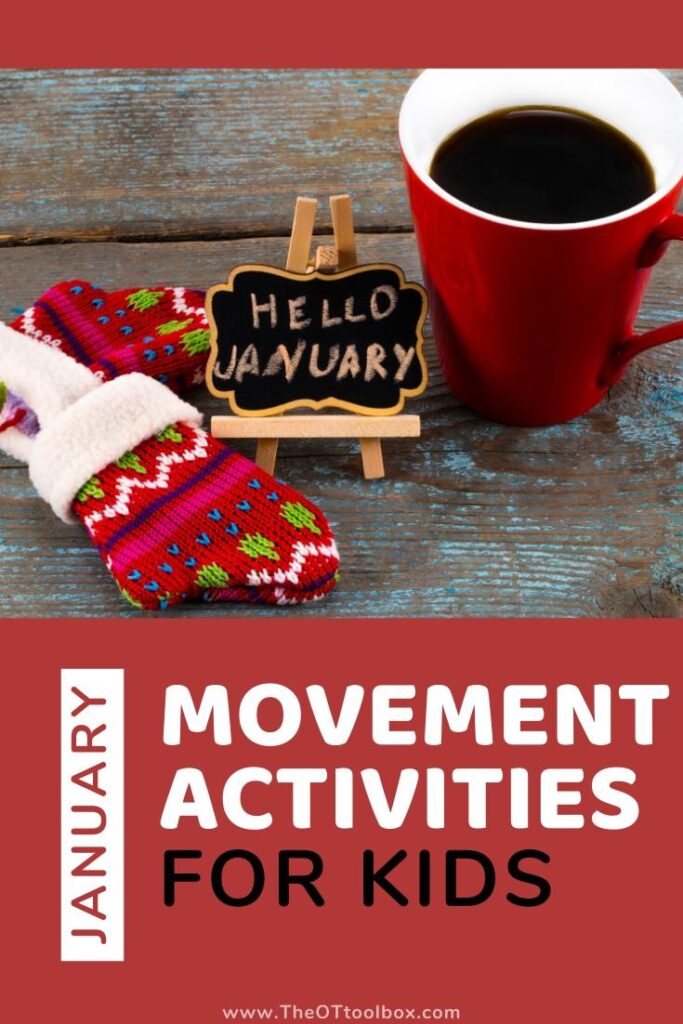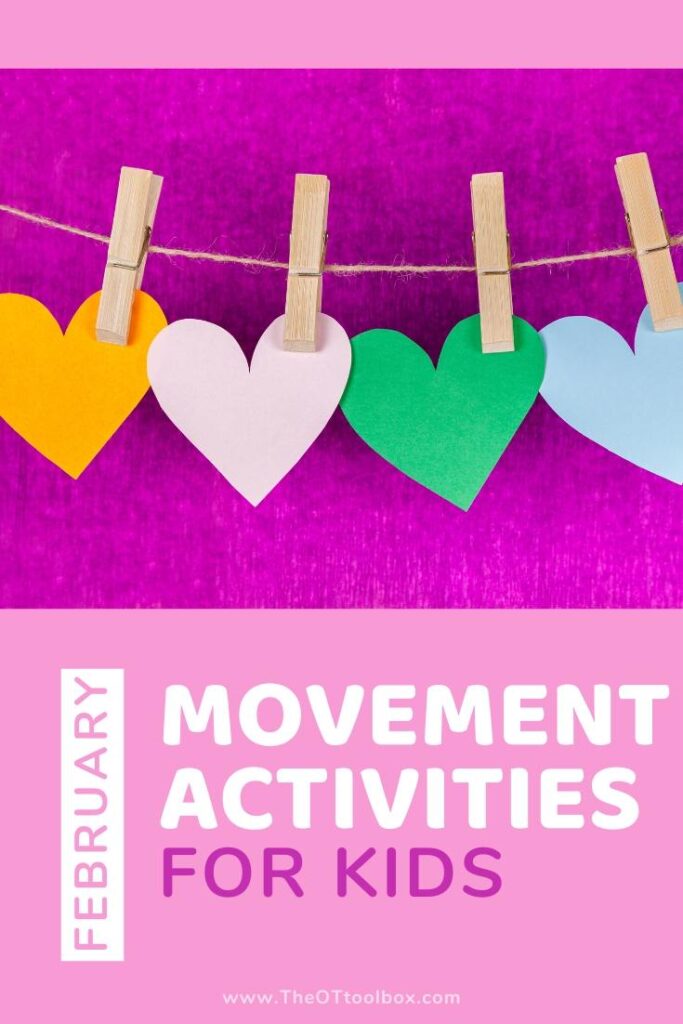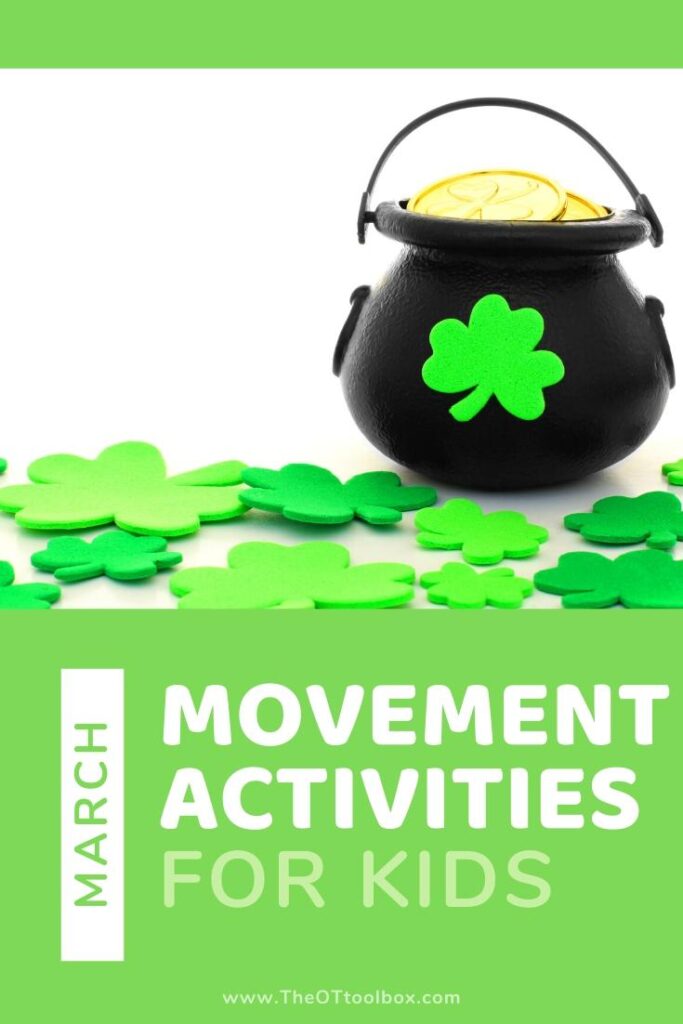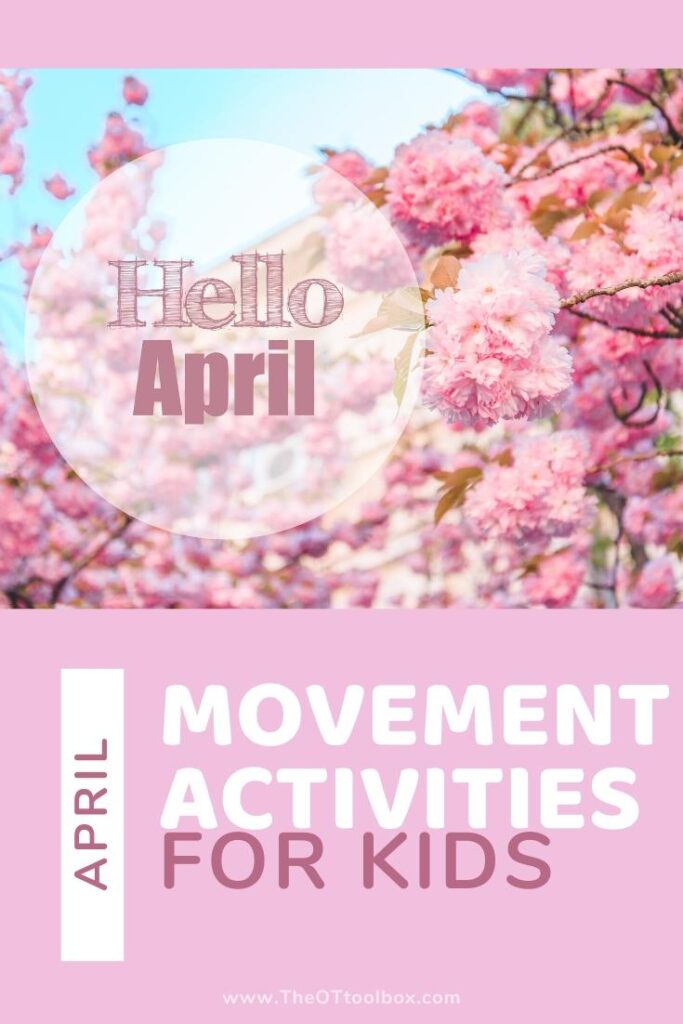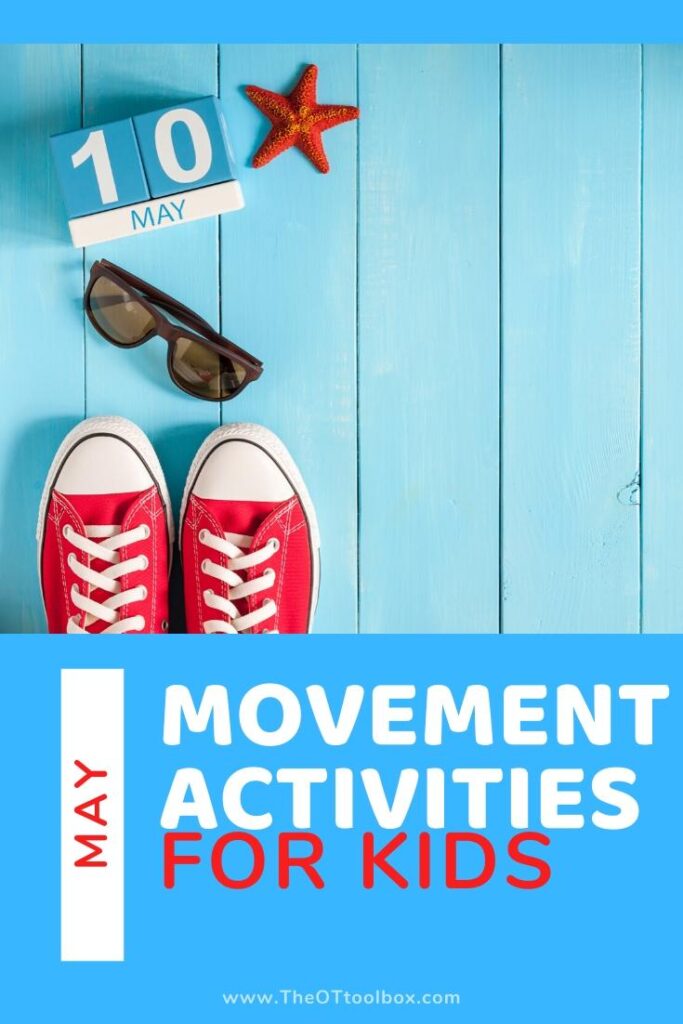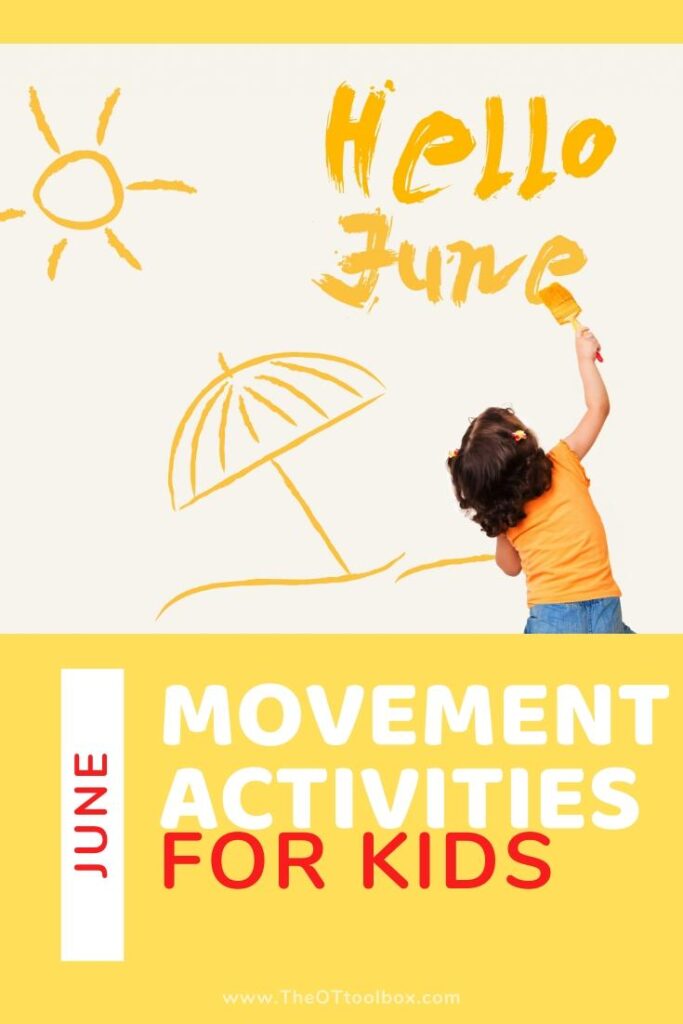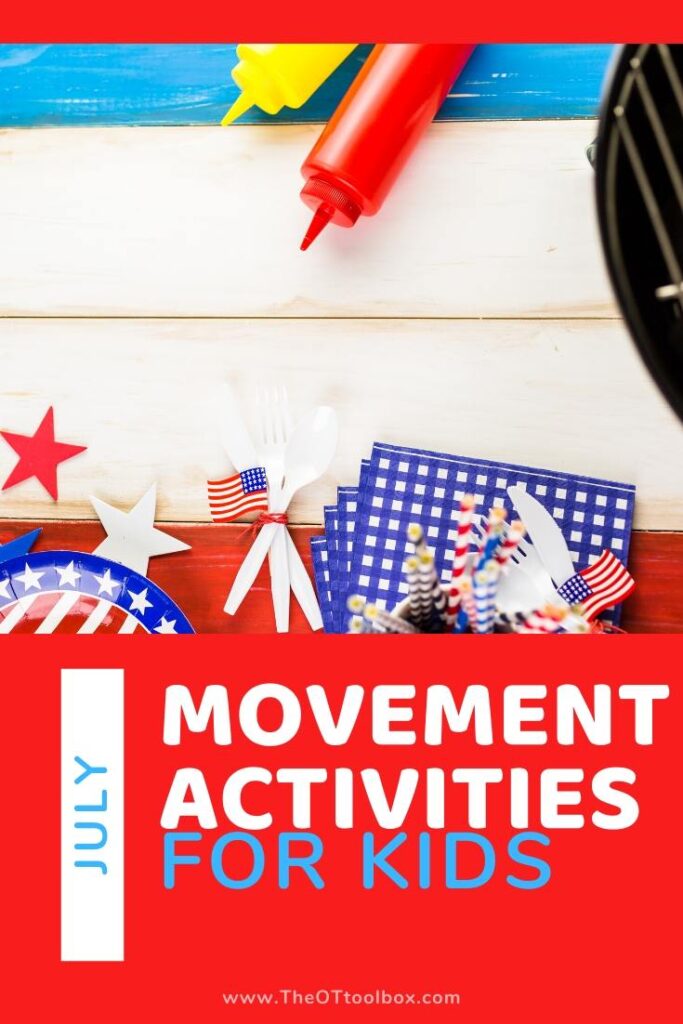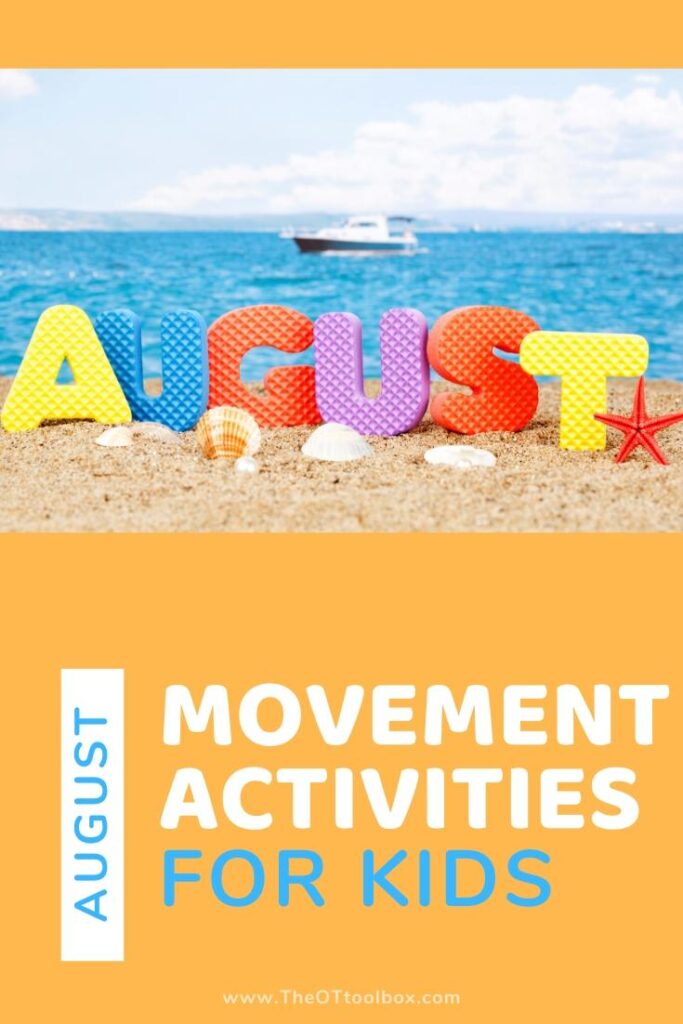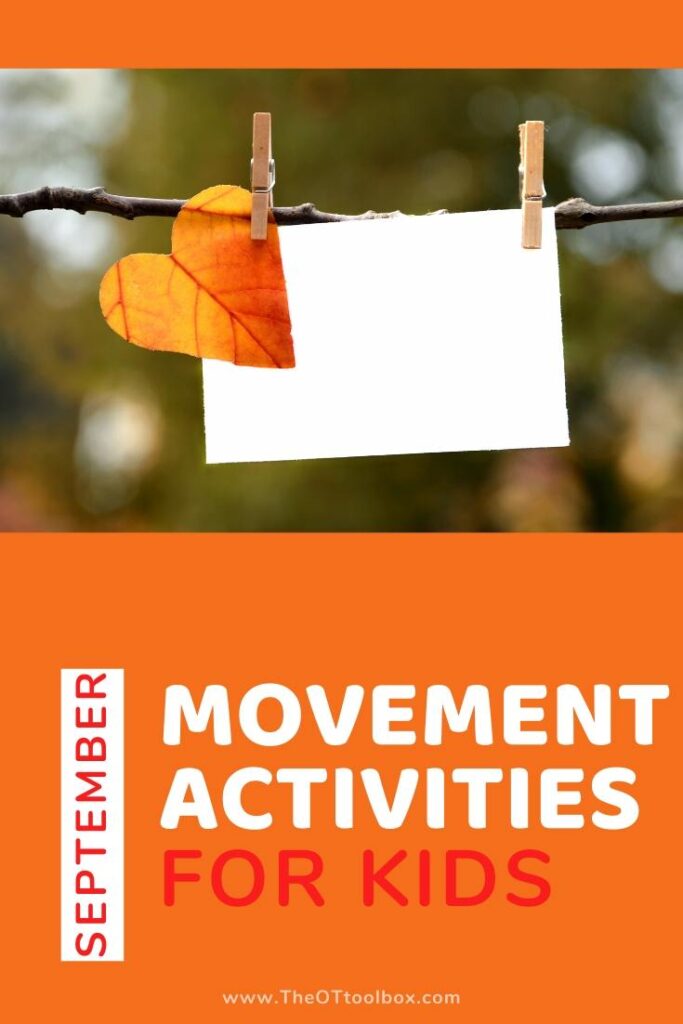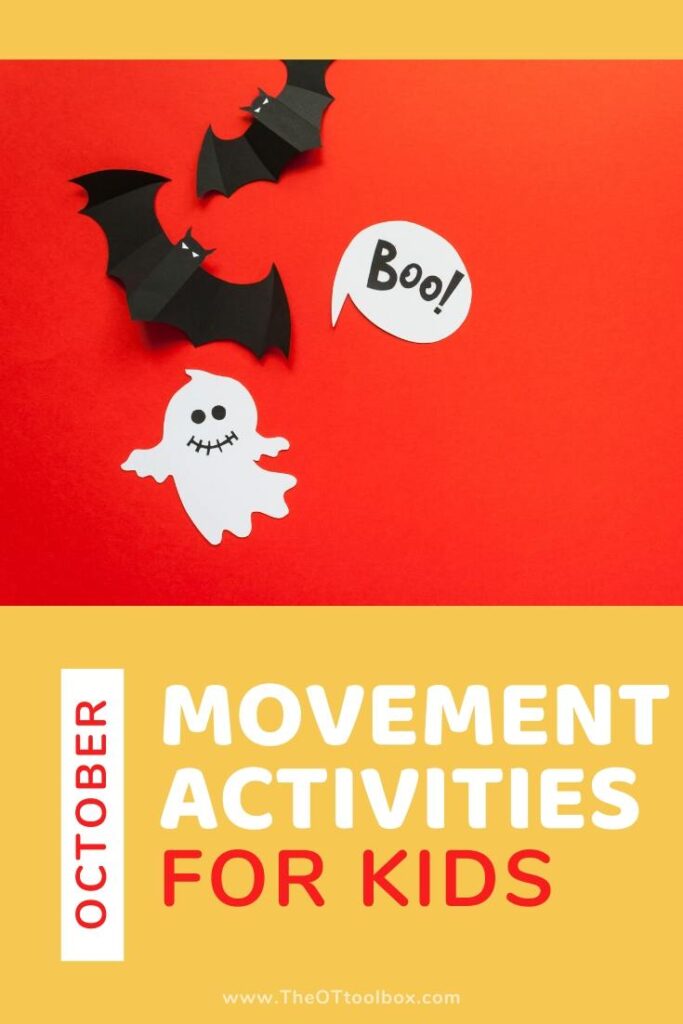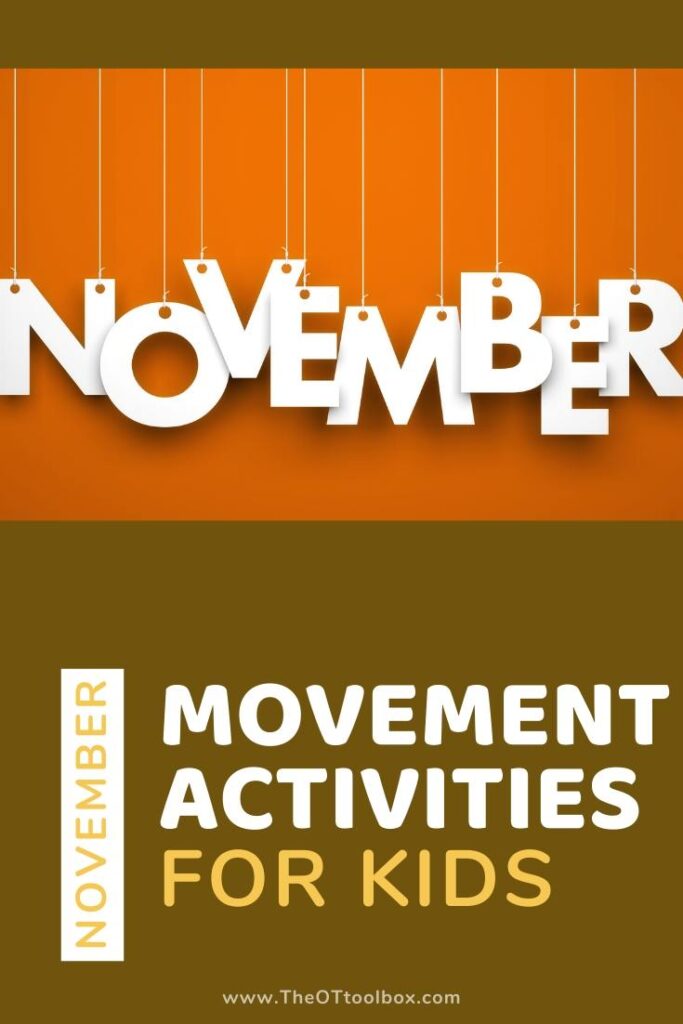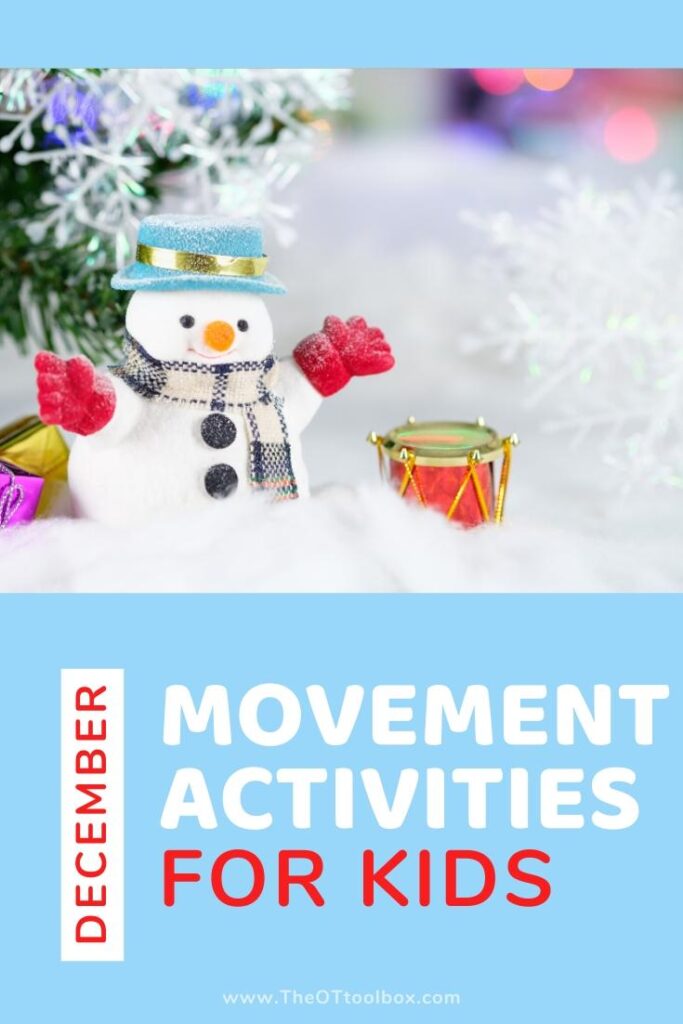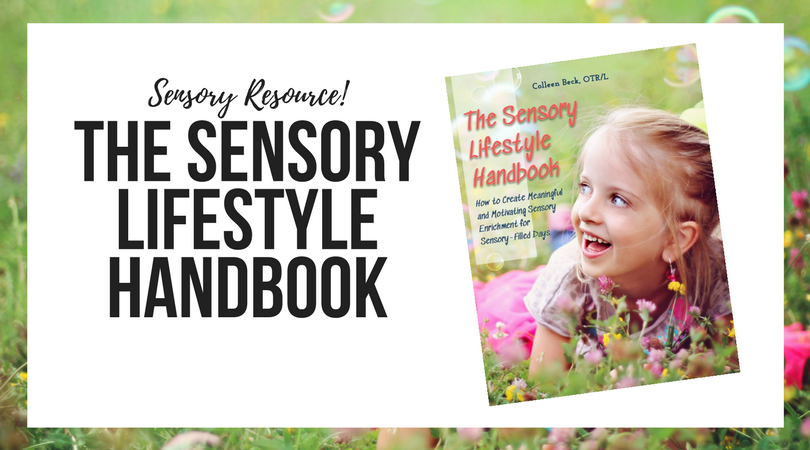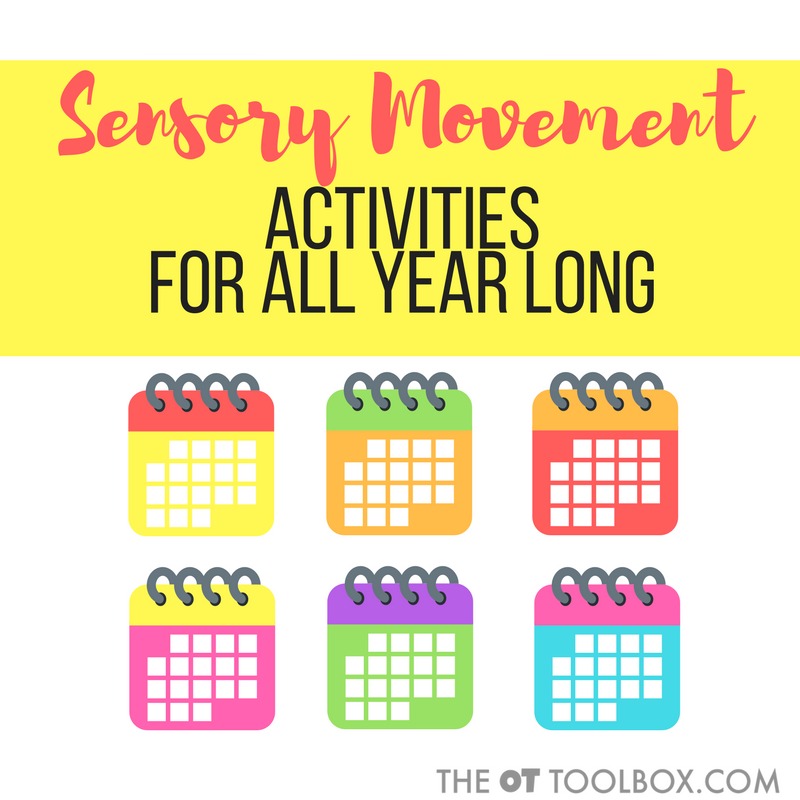This dinosaur brain break activity is a set of free proprioception activities that provides heavy work with a dinosaur theme, making movement and proprioceptive input a fun way to address dinosaur -sized needs. Whether you are looking for heavy work activities for the kids to add to distance learning or heavy work activities for OT teletherapy programs, these free dinosaur movement cards are a great sensory activity to add to your therapy toolbox. Scroll all the way to the bottom of this post to grab your Dinosaur Movement Activity Cards…and check out the Dinosaur OT activities too!
This post explains more about proprioception sensory activities but to better understand why and how to incorporate movement breaks into learning, check out this post on brain breaks for kids.
This freebie was originally created as part of October’s Sensory Processing Awareness Month, however, for a kiddo that loves anything dinosaurs, it works out great any time of year. Kids with sensory integration needs are those kiddos who are bumping into everything and everyone.
The little ones who fall out of their chairs, press too hard on their pencils, are clumsy, fidget, or seek extra movements. They might flap their hands or slap their feet when they walk.
he thing about kids is that everyone is different and everyone will have different needs, interests, and abilities. This Dinosaur Sized Feelings sensory movement activity is perfect for kids seeking sensory input and kids who just need to move!
Now, it’s important for me to note, that when I say Dinosaur-Sized feelings in this post, I’m talking about the child’s feeling of hyposensitivity to their environment.
They are seeking out extra stimulation from people, walls, cushions…anything really and are feeling a big need to improve their central neural system functioning in order to complete tasks and function.
(Read more about the Central Nervous System below!)
What I’m not talking about in this post is the emotional side of feelings. There has been at least one study done that attempts to determine whether emotional feelings can be influenced by proprioceptive input.
I’m not talking about the big emotional feels we all have. In this activity, I’m focusing on the big feelings of sensory needs kids might have, and how to stomp those sensory needs out with proprioception.
It’s all about the ability to regulate those giant, dinosaur-sized sensory related feelings that impact emotional regulation, coping abilities, worries, anxieties. This post on Zones of Regulation activities explains a little more on self-regulation and specific ways to address these needs.
What is Sensory Integration?
Let’s cover some of the background info about what’s going on behind self-regulation. Typically, our Central Nervous System integrates sensory input from the environment in a balanced process that screens out certain information and acts on important information, at an automatic level…one that we are not cognitively aware of.
For kiddos with atypical sensory integration, the central nervous system has difficulty screening out unimportant information from our environment.
For those children, interaction with their surroundings can be stressful as they are either over responsive or under-responsive to normal stimulus. This results in dysfunctional behavior and social difficulties.
For a thorough explanation of sensory integration, sensory processing, and what specific actions look like as a part of our sensory systems, grab this free sensory processing booklet.
You’ll access the free booklet and join a short email course that explains sensory processing in great detail. It’s a free informative course via email that you don’t want to miss.
Proprioception Activities for kids
I shared a post in the past about proprioception and handwriting with too much pressure.
In that post, I told you how the proprioceptive system receives input from the muscles and joints about body position, weight, pressure, stretch, movement and changes in position in space.
Our bodies are able to grade and coordinate movements based on the way muscles move, stretch, and contract. Proprioception allows us to apply more or less pressure and force in a task.
Instinctively, we know that lifting a feather requires very little pressure and effort, while moving a large backpack requires more work. We are able to coordinate our movements effectively to manage our day’s activities with the proprioceptive system.
The brain also must coordinate input about gravity, movement, and balance involving the vestibular system.
(This post does contain affiliate links.)
Kids who are showing signs of proprioceptive dysfunction might do some of these things:
- Appear clumsy
- Fidget when asked to sit quietly.
- Show an increased activity level or arousal level.
- Seek intense proprioceptive input by “crashing and bashing” into anything.
- Slap their feet when walking.
- Flap hands.
- Use too much or too little force on pencils, scissors, objects, and people.
- “No fear” when jumping or walking down stairs.
- Or, are overly fearful of walking down steps/jumping.
- Look at their body parts (hands/feet) when completing simple tasks.
- Sit down too hard or miss chairs when sitting.
- Fall out of their seat.
- Fluctuates between over-reacting and under-reacting in response to stimulation.
- Constantly on the move.
- Slow to get moving and then fatigue easily.
Dinosaur Themed Heavy Work Activities
This activity is easy. There is not much to it really, other than being a dinosaur themed way to calm and organize those big dinosaur feelings.
The heavy work activities add proprioception that can be a tool to address regulation or sensory needs. Here, I’m sharing with you a few heavy work suggestions that may help hyposensitive kiddos.
I wanted to share activities that might be of interest to the child that loves a dinosaur theme. It’s my hope that these work for you and your family! If you are looking for more dinosaur themed movement activities, check out this past post sharing Dinosaur movement activities, based on the book popular children’s book, Dinosaurumpus.
Please note (as with any activity that you find on this website): This is meant to be a resource and not Occupational Therapy treatment.
Please seek individualized evaluation and treatment strategies for your child. All kids are so different in their sensory needs and abilities and adverse reactions can occur with globalized treatments.
Big dino-sized feelings can happen in a little body!
Simply print out the free printable, cut out the cards, and pretend to play, walk, and eat like a dinosaur!
We did use our Mini Dinosaurs as we practiced all of the Dino Moves in these activities. Use them in a scavenger hunt. Your child needs to find hidden dinosaurs and once they bring them back to you, do a proprioception activity from the handout.
Another idea is to do the heavy wok activities before a fine motor task like handwriting to calm and organize the body.
You can get the free dinosaur proprioception activities printable by joining the thousands of others on our newsletter subscriber list. You will receive occasional newsletter emails.
Once you subscribe you’ll receive an email with a link to the free printable, as well as other freebies that only our subscribers receive.
Dinosaur Activities for OT sessions
Looking for more Dinosaur activities? Try adding these to your occupational therapy interventions. Some of the ideas below are great for adding to teletherapy sessions. Others make great OT home programs.
Dinosaur Activities for Occupational Therapy
Ok, you have a child on your OT caseload (on in your classroom or home) that LOVES all things dinosaur…how do you get them involved in therapy sessions? You can totally guide therapy goals along a theme like dinosaurs.
The OT dinosaur activities listed below are fun ways to work on specific skills in therapy sessions, using hands-on play and activities. You’ll find fine motor dinosaur activities, gross motor dinosaur ideas, dinosaur printables, sensory play with a dino theme, and even dinosaur visual perception activities.
If you have a child in OT who LOVES all things dinosaur, these are great incentive activities that will build attention and focus to the session. Adding a much-loved theme to therapy sessions can empower a child as they play with more intent and attention.
Dinosaur Gross Motor Game– This dinosaur game offers kids a chance to MOVE! Use a child’s love of dinosaurs to create movement breaks and indoor activity with a dinosaur theme.
This is one indoor play idea that my own children loved when they were little, but the bonus is that they gain midline crossing, motor planning, sequencing, bilateral coordination, balance, endurance, proprioception, and vestibular benefits all in the same movement activity.
Dinosaur Playdough Kit can be made with play dough and a few small dinosaur figures. It’s a great way to add proprioception to the hands as heavy work before a handwriting activity.
This busy activity can be pulled out at any time and kids can keep those hands busy while building intrinsic hand strength and endurance needed for tasks like coloring. Read more about warming-up the hands before fine motor tasks here.
Free Dinosaur Visual Perception Sheet– This printable page can be printed off once and used with a page protector sheet for the whole therapy caseload. Or, add it to teletherapy sessions or distance learning as part of a child’s specific plan.
Kids can work on visual perceptual skills such as scanning, form discrimination, figure ground, form constancy, and other visual perception skills. It’s perfect for dinosaur fans of all ages!
Dinosaur Counting Cards with clothes pins to clip onto the matching number of dinosaurs is a great way to build hand strength with a dinosaur theme. Print them off and add them to your therapy toolbox. Here are more ways to use clothes pins in building skills in kids.
Goldilocks and the Three Dinosaurs book and jacks game– have you read the children’s book, Goldilocks and the three dinosaurs? This children’s book is very cute and a fun way to add books to occupational therapy sessions.
Then, add the fine motor and motor planning jacks game to build coordination and dexterity skills by playing jacks. This is such a fun way to add movement and reading to therapy sessions, making motor planning, sustained attention, bilateral coordination, crossing midline, floor play (heavy work!), all integrated into a single dinosaur activity!
Dinosaur Matching with mini-figure dinosaurs is a fun way to work on visual scanning, visual discrimination, visual memory, and other visual perceptual skills. Using a small ball of play dough, press the dinosaur’s feet into the dough. They can then try to match up the feet to the footprints.
All you need are mini dinosaur figures and salt dough, play dough, or similar dough. It’s a fun way to work on skills that come in handy for handwriting, reading, and number identification.
Dinosaur Guessing Game is a fun way to work on discrimination skills and visual attention. For kids that have trouble attending to tasks, this dinosaur themed activity may do just the trick. Use dinosaur figurines and a box or basket to hide the dinosaurs.
You can cover the dinosaurs and ask children to find the dino with specific features such as sharp teeth or a specific color. This visual memory game builds skills needed for letter discrimination and attention to detail.
Free Dinosaur Number Puzzles– Kids can cut the paper puzzles into strips to work on scissor skills and bilateral coordination. The strait lines or these puzzles make it a great beginning scissor activity for children learning to use scissors. Then, they can challenge those visual perceptual skills to build the puzzle by scanning, and attending to details as they discriminate parts of the puzzles.
Dinosaur Emergent Reader– Use a piece of colored paper to create a cone dinosaur craft like the one shown in this post.
Kids can make colored dinosaurs and match them to dinosaur counters or small pieces of paper that match the colors. Don’t want to make the dinosaur crafts? Use colored cups to pretend!
Free Dinosaur Subtilizing Game– This dinosaur subtilizing printable page has a fine motor component by that builds precision and dexterity as kids place counters on a printable play mat. They can roll a dice and work on an the essential math skill of subtilizing.
What is subtilizing? Essentially, this skill means kids can look at a group of objects and know how many there without having to count each object one by one. Subtilizing is important in math, especially higher math skills.
Dinosaur Sensory Bottle– You know we love sensory bottles! Sensory bottles are a great tool to add to your toolbox to address sensory needs or self-regulation. Using a sensory bottle as a coping tool can help kids relax, calm down, or focus.
This dinosaur themed sensory bottle is great for kids who love dinosaur anything! Here is more information on how to make a sensory bottle.
Dinosaur Letter Tracing– Kids can work on fine motor precision and dexterity while also working on letter formation, gross motor skills, bilateral coordination, crossing midline, visual tracking, and so many more skills.
All you need are dinosaur mini-figures, paper, and a marker. Draw a large letter on the paper and then children can place the small dinosaurs along the lines to “build” the letters. Here is more information on teaching letter formation and using manipulatives like these small dinosaur figures in teaching letters.
DIY Dinosaur Tangrams All you need is a set of tangram shapes, paper, and markers to make your own dinosaur tangram pattern cards. Kids will love building their own pattern cards, too.
This is a great activity for those who have the actual tangram puzzle pieces, but don’t have access to a color printer or are able to purchase pre-made dinosaur pattern cards. Work on visual perceptual skills by copying and building the geometric dinosaurs together as a fun activity that little dinosaur fans will love.
Here is a great resource on how to use tangrams to build visual perceptual skills. Check out that article, and then you can read more on the specifics of tangrams and handwriting. The fine motor activity and the functional task of writing go “hand-in-hand”!
Are you looking for thorough information on Sensory Processing and Proprioception (or any of the sensory systems and how they affect functional skills, behavior, and the body’s sensory systems? This book, Sensory Lifestyle Handbook, will explain it all. Activities and Resources are included. Get it today and never struggle to understand or explain Sensory Integration again. Shop HERE.
This post is part of our 31 Days of Occupational Therapy series where you can find free or almost free treatment activities and ideas. Stop by every day! You’ll find more fun ideas each day in October.
